Sri Lankan Cuisine reflects a vibrant tapestry of flavors and spices, blending indigenous traditions with global influences. Renowned for its aromatic curries, coconut-infused dishes, and diverse seafood offerings, Sri Lankan cuisine tantalizes taste buds. Rice, accompanied by an array of curries, forms the heart of meals, complemented by spicy sambols and crispy appams. The marriage of exotic spices, tropical fruits, and aromatic herbs defines Sri Lankan gastronomy, creating a harmonious symphony of sweet, savory, and spicy notes. Rich in cultural heritage, Sri Lankan cuisine is a sensory journey through the island's diverse landscapes and culinary history.
Biryani
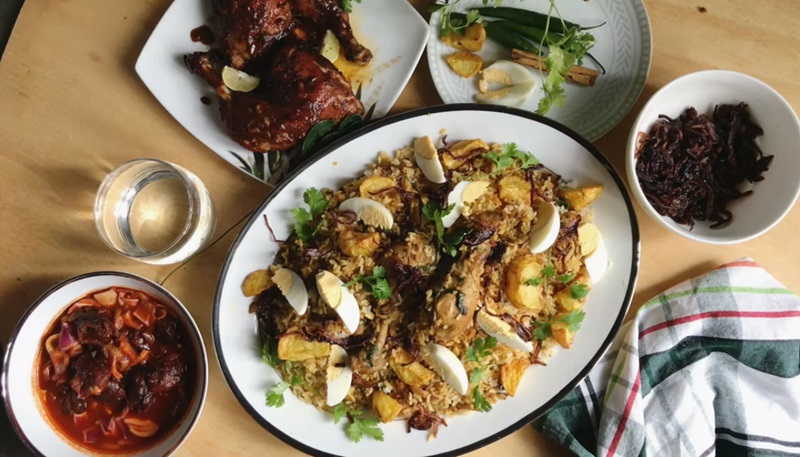
Biryani is a renowned mixed rice dish celebrated across South Asia, including Sri Lanka. This flavorful ensemble combines fragrant rice with diverse meats like beef, chicken, prawn, lamb, goat, or fish, all harmoniously infused with an array of spices. To accommodate vegetarians, some variations artfully substitute vegetables for the traditional meat, occasionally incorporating eggs and potatoes.
Sri Lanka's Biryani journey traces back to the early 1900s when South Indian Muslims, engaged in trade in the northern and Colombo regions, introduced this culinary gem. In Sri Lanka, it is affectionately known as Buryani, a colloquial term derived from Buhari Biryani. Distinguishing itself with a characteristic zest, Sri Lankan biryani often carries a bolder spice profile compared to its Indian counterparts.
Accompanying this aromatic delight, side dishes add a delightful symphony of flavors. Acchar, Malay pickle, cashew curry, and mint sambol are among the culinary companions that elevate the Sri Lankan biryani experience, making it a cherished and spicy masterpiece in the country's rich tapestry of culinary traditions.
Masala Tea (Spiced Tea)

Spiced tea, also called masala chai, is a beloved and traditional drink in Sri Lanka. This delightful beverage is made by blending black tea leaves with an assortment of fragrant spices and herbs. The main ingredients usually consist of black tea, milk, cardamom pods, cinnamon sticks, cloves, ginger, and sometimes nutmeg. To make masala chai, the spices and tea leaves are first simmered in water to extract their delicious flavors. Then, milk is added to create a creamy and luscious texture. The tea is further boiled to fuse all the elements together, resulting in a harmonious symphony of tastes.
Masala chai is commonly enjoyed steaming hot and is renowned for its comforting and soothing attributes. It is a staple in Sri Lankan households and can often be found in tea stalls and cafes. The captivating blend of spices creates an enchanting aroma that captivates the senses, making it an ideal companion for moments of relaxation or social gatherings.
Vada
-1702597440.jpg)
Vada, a delightful category of savory fried snacks originating from India, takes on various forms, be it fritters, cutlets, or dumplings. These flavorful treats, sometimes generously stuffed with vegetables, are a culinary canvas that harmonizes with chutneys and sambar, enhancing their taste.
Diverse in composition, the types of vadas span a spectrum of ingredients. From legumes, exemplified by the medu vada of South India, to potatoes, showcased in the batata vada of Maharashtra, each variant contributes a unique flavor profile. Vadas have found their way into breakfast tables and snack platters, becoming an integral part of culinary traditions.
In Sri Lankan cuisine, vadas have garnered popularity, showcasing the widespread appeal of these crispy delights. Their versatility extends beyond standalone snacks, making appearances in various culinary preparations like dahi vada and vada pav, adding a delightful crunch to Sri Lanka's gastronomic landscape.
Dosa
-1707840246.jpg)
A dosa, a delicate and thin savory crepe, is a cherished creation in South Indian cuisine, crafted from a fermented batter comprising ground black gram and rice. Served piping hot, dosas become a delectable canvas for the accompaniments of chutney and sambar, a savory lentil-based vegetable stew. The appeal of dosas extends beyond South Asia, captivating taste buds worldwide.
Introduced during the British rule in Ceylon (Sri Lanka) by South Indian emigrants, dosas found a new home. Merchants from Tirunelveli and Tuticorin, settling in Sri Lanka, played a pivotal role in disseminating the flavors of South Indian cookery. Establishing restaurants, known as vegetarian hotels, initially catered to the needs of the emigrant population and, over time, introduced the broader Sri Lankan community to the culinary delights of dosas. This delightful and versatile dish, with its roots in South India, has become an international favorite, showcasing the rich tapestry of South Asian cooking.
Roti
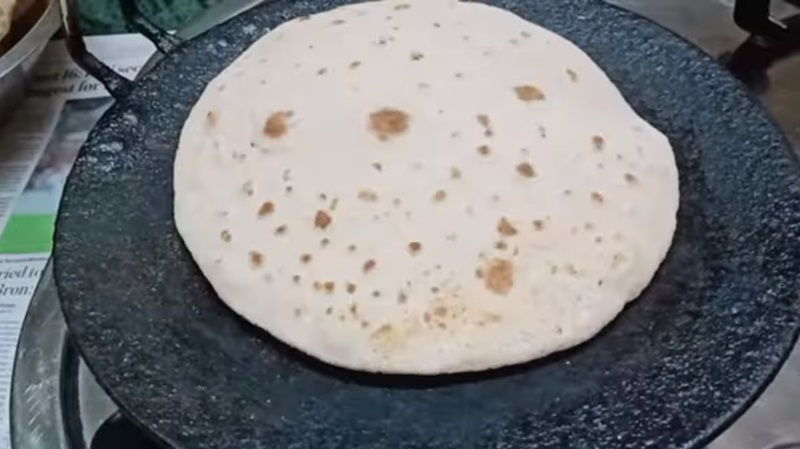
Roti, a circular flatbread rooted in the Indian subcontinent, holds widespread popularity in various South Asian countries. In Sri Lanka, Godamba roti stands out as a simpler version, crafted from wheat flour. The Pol roti takes a unique twist by incorporating shredded coconut into the dough, adding a delightful flavor. Another variant is the spicy roti, where chopped onions and green chilies are skillfully integrated into the dough, providing a zesty kick to the taste.
These diverse renditions of roti reflect the culinary creativity ingrained in Sri Lankan cuisine. Whether it's the simplicity of Godamba roti or the flavorful complexity of Pol and spicy roti, each variation caters to different palates and occasions. Roti, in its various forms, serves as a versatile accompaniment or standalone delight, showcasing the adaptability and rich gastronomic heritage of this beloved flatbread in Sri Lanka and beyond.
Sambal
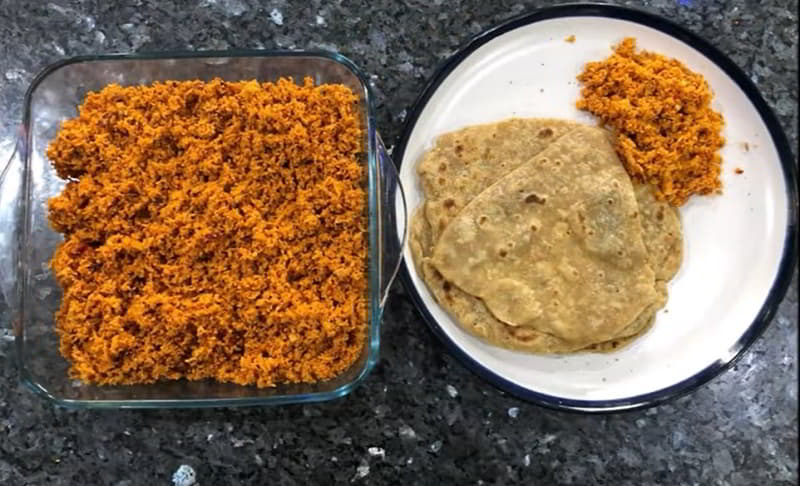
Sambal, a piquant Indonesian chili sauce or paste, embodies a rich amalgamation of flavors, crafted from an array of chili peppers harmonized with ingredients like garlic, shrimp paste, palm sugar, scallion, shallot, ginger, and lime juice. The term "sambal," originating from the Javanese word "sambel," is deeply rooted in Indonesia's culinary traditions, extending its influence to Sri Lanka, Malaysia, Brunei, Singapore, the Netherlands, and Suriname through Indonesian diaspora.
With a staggering 212 variants, sambal is a versatile condiment, elevating dishes like ikan bakar (grilled fish), ayam penyet (smashed chicken), lalab (raw vegetables), ayam goreng (fried chicken), ikan goreng (fried fish), and iga penyet (ribs). This spicy delight is also a quintessential accompaniment to various soto soups.
The regional diversity of sambal is particularly pronounced in Java, with each variant offering a distinct sensory experience. From the vibrant street food stalls to home kitchens, sambal remains a flavorful cornerstone, enriching the culinary landscape not only in Indonesia but also across borders.
Papadam

Papadam, also referred to as papad, is a delightful Indian delicacy crafted from black gram bean flour dough. This versatile treat can be prepared through deep frying or dry heat, imparting a satisfying crunch. Beyond black gram, alternative flours like chickpeas, lentils, millet, tapioca, potato, or rice are employed, adding diversity to this culinary gem.
Widely cherished in India, Sri Lanka, Bangladesh, Pakistan, Nepal, and the Caribbean, papad plays a multifaceted role in the culinary scene. Traditionally served as an accompaniment to main meals, it also takes center stage as an appetizer, often paired with flavorful dips such as chutneys. The creativity extends to toppings like chopped onions and chili peppers, transforming it into a standalone delight. Moreover, papad finds its way into curries, infusing them with a unique texture and taste.
This versatile and crispy delight is a testament to the culinary ingenuity of South Asian cuisines, where it seamlessly transitions from a humble sidekick to a star ingredient, elevating the dining experience with its crunch and rich flavor profile.
Satay
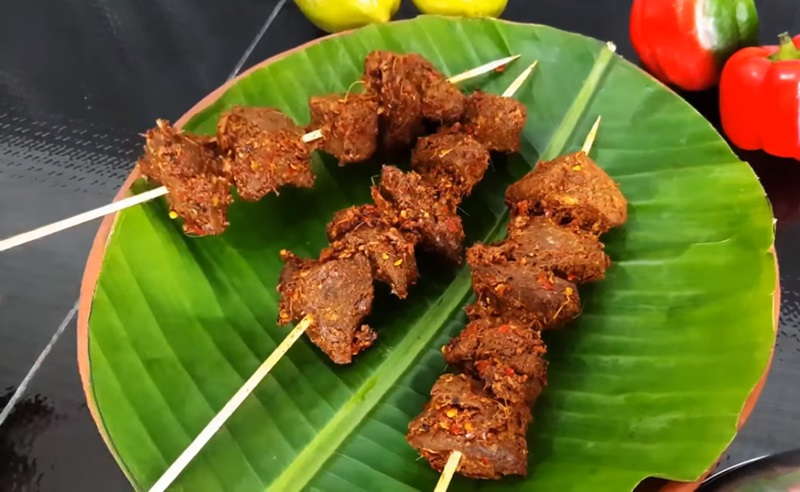
Satay, a delectable Southeast Asian kebab, stands as a culinary masterpiece, featuring seasoned, skewered, and barbecued meat paired with a savory sauce. While its earliest roots trace back to Java island, Indonesia, satay has evolved into a national dish, reflecting the rich diversity of the country's culinary landscape.
Indonesian satay, often accompanied by peanut sauce, takes on various regional nuances and is frequently served with lontong, a unique rice cake. The versatility of satay has led to an array of recipes, reflecting the cultural tapestry of Indonesia. This culinary gem has transcended borders, gaining popularity in other Southeast Asian nations, Suriname, the Netherlands, and even finding a place in Sri Lanka's local cuisine due to the influences of the Malay community.
The skewered delights of satay may feature diced or sliced mutton, pork, chicken, beef, fish, goat, or tofu, showcasing its adaptability to various palates and dietary preferences. As a beloved and widely recognized dish, satay remains a testament to the rich tapestry of flavors woven throughout Southeast Asia and beyond.
Idli
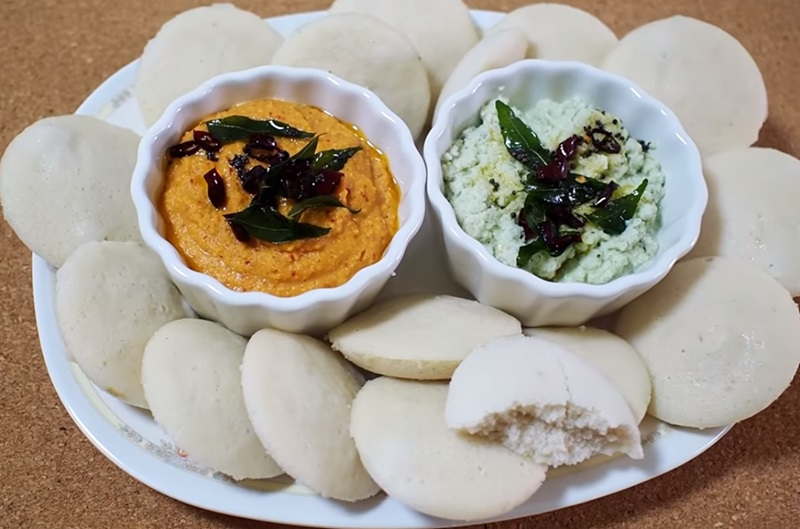
Idli, a beloved savoury rice cake originating from South India, has secured its place as a staple breakfast item in Southern India and Sri Lanka. These delectable cakes are crafted by steaming a batter comprising fermented black lentils and rice, a process that enhances their digestibility by breaking down starches through fermentation.
Beyond the classic idli, various regional variations add to the diversity of this culinary gem. Rava idli, made from semolina, offers a unique twist to the traditional recipe, while regional variants like sanna of Konkan showcase the local adaptations of this cherished dish.
As South Indians and Sri Lankans have spread across the globe, idli has evolved with countless local variations and adaptations. Changes in ingredients and cooking methods have accommodated diverse palates and regional preferences. Parboiled rice, store-bought ground rice, or cream of rice serve as alternative options, and the addition of yogurt provides a sour flavor for unfermented batters. Ready-made mixes have further simplified the preparation of idlis, allowing for almost instant gratification for enthusiasts worldwide.
Lassi

Lassi, a revered yogurt-based beverage with a delightful smoothie-like consistency, holds the title of "the most popular and traditional yogurt-based drink" in India, and its popularity extends to Sri Lankan cuisine. The preparation involves blending yogurt, spices, and water, with the traditional yogurt in Punjab sourced from water buffalo milk. Lassi, a versatile drink, boasts various variations that cater to diverse palates.
Commonly, cumin and cardamom are added to enhance the flavor profile of lassi. Traditionally, it is served in a distinctive clay cup known as kulhar, adding a touch of authenticity to the drinking experience. The array of lassi varieties includes Namkin lassi, meethi lassi, lassi masalewal, and specialty versions like bhang lassi. Fruit-infused lassi, such as mango lassi or strawberry lassi, adds a refreshing twist to this classic beverage.
Whether enjoyed as a sweet treat or a savory indulgence, lassi's versatility and cultural significance make it a beloved drink that transcends regional boundaries.
Arrack

Arrack, a distilled alcoholic beverage prevalent in India, Sri Lanka, and Southeast Asia, is crafted from the fermented sap of coconut flowers, sugarcane, and sometimes grains or fruit, depending on regional variations. Notably, Sri Lankan (Ceylon) arrack stands out as a more refined spirit, featuring hints of cognac and rum character alongside delicate floral notes. In contrast, locally produced arrack styles may resemble moonshine in their presentation, emphasizing the diverse production methods across regions.
Sri Lanka, a prominent producer of coconut arrack, historically had government involvement in its production until 1992. Premium arrack blends maintain purity by excluding additional ingredients, while more affordable blends may incorporate neutral spirits before bottling. Traditionally, coconut arrack is enjoyed neat or paired with ginger beer, a popular soda in Sri Lanka. It also serves as a versatile mixer in cocktails, seamlessly substituting for rum or whiskey in various recipes. Arrack's appeal extends to its combination with popular mixers like cola, soda water, and lime juice, offering a wide range of flavorful possibilities.
Kheer
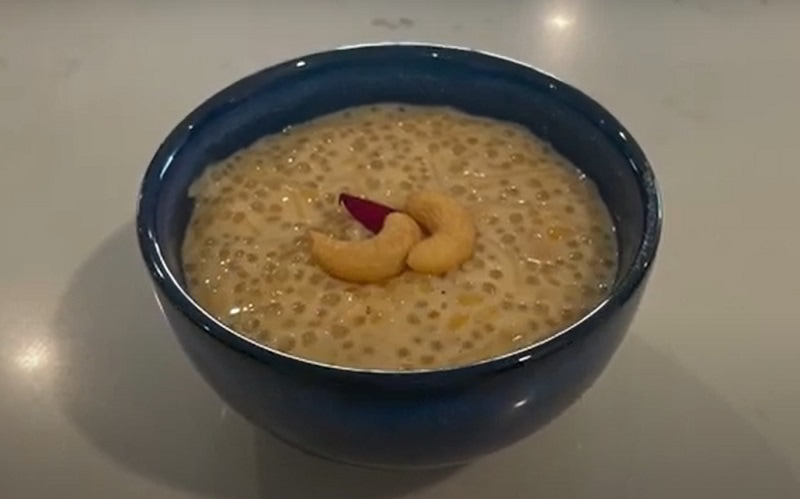
Kheer, known as payasam or payesh, is a beloved pudding/porridge originating from the Indian subcontinent, cherished for its luscious blend of rice, sugar or jaggery, and simmered milk. This delectable treat can be infused with a delightful medley of flavors, including cardamom, dried fruits, nuts, and saffron, elevating its taste profile. While conventionally prepared with rice, kheer showcases its versatility by incorporating alternatives like vermicelli (sevai), cracked wheat, or tapioca (sabudana).
Widely appreciated in Sri Lankan cuisine, kheer holds a significant place in festive and celebratory occasions. Its creamy texture, aromatic spices, and rich sweetness make it a staple dessert, enjoyed both as a comforting homely treat and as an integral part of special feasts. The diverse variations of kheer reflect regional preferences and culinary creativity, offering a delightful experience for those indulging in this traditional and timeless dessert. Whether garnished with slivers of almonds, pistachios, or a sprinkle of saffron, kheer stands as a testament to the culinary artistry that transcends borders within the Indian subcontinent and beyond.
Puttu
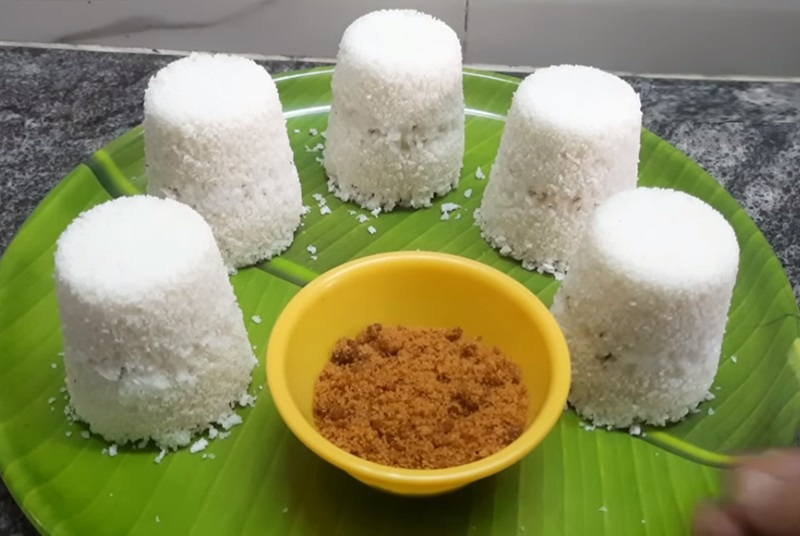
Puttu, a cherished rice dish deeply embedded in Sri Lankan culinary traditions, is a steamed delight crafted from rice flour, coconut, and a touch of salt. Its versatility allows it to grace the table for breakfast, lunch, or dinner, showcasing its role as a comforting and wholesome meal. The unique preparation involves employing a special cylindrical steamer known as a puttu maker.
To create this flavorful dish, rice flour is combined with water and salt, resulting in a crumbly texture. The mixture is then meticulously layered with freshly grated coconut in the puttu maker. Upon placing the apparatus on a steamer, the concoction is delicately steamed until it achieves a soft and fluffy consistency. Puttu's charm lies in its ability to be paired with various accompaniments, such as chickpea curry, dhal curry, or zesty sambal. Additionally, it pairs well with fruits like bananas or papaya.
The combination of airy rice flour and aromatic coconut imparts a delightful texture and flavor to puttu, making it a beloved choice among locals and visitors alike. This nutritious dish stands out for its low fat and cholesterol content, embodying a wholesome representation of Sri Lankan culinary excellence enjoyed across different meals and occasions.
Idiyappam
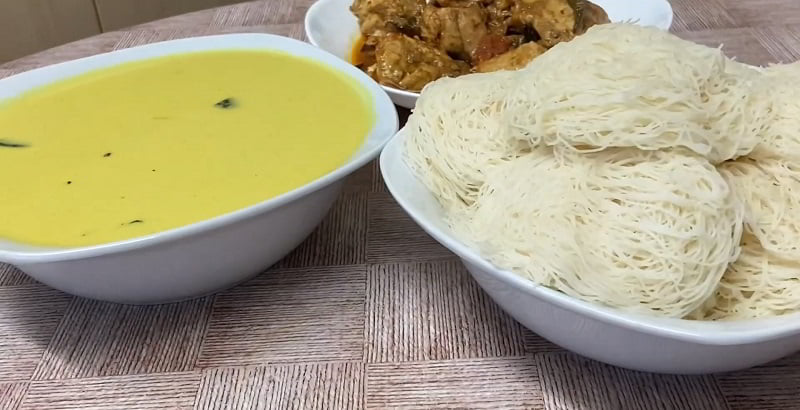
Idiyappam, also recognized as string hoppers, traces its origins to southern India and has become a culinary gem in Sri Lankan cuisine. In Sri Lanka, idiyappam is meticulously crafted from a hot-water dough, employing either wheat flour or rice meal. The dough is meticulously pressed through a string mold onto small wicker mats, creating delicate circlets that are expertly steamed to perfection.
This delicate dish is rarely savored on its own, finding its perfect complement in flavorful curries, with Kiri hodi being a popular choice. The beauty of idiyappam lies in its versatility, seamlessly pairing with an array of savory accompaniments, enriching the overall dining experience.
The influence of idiyappam extends beyond borders, reaching Southeast Asia, where it is known as putu mayam in Malaysia and Singapore, and putu mayang in Indonesia. As a testament to its popularity, idiyappam has transcended regional boundaries, captivating taste buds with its unique texture and ability to harmonize with various curries, creating a delightful culinary journey that bridges cultures and traditions.
Falooda

Falooda has evolved into a cherished element of Sri Lankan gastronomy. Originating in South Asia, this delightful fusion of dessert and beverage has found a special place in Sri Lankan hearts. The essence of Sri Lankan falooda lies in the harmonious interplay of vermicelli noodles, basil seeds, and a medley of ingredients, including rose syrup, ice cream, and condensed milk. Each sip or spoonful presents a symphony of flavors and textures, making it a refreshing and indulgent treat enjoyed across the island. The integration of diverse components mirrors the multicultural tapestry of Sri Lankan cuisine, where unique blends of ingredients create a culinary masterpiece that appeals to local palates. Whether relished as a respite from the tropical heat or as a sweet conclusion to a meal, Sri Lankan falooda stands as a testament to the vibrant and inventive nature of the island's culinary landscape.
Appam
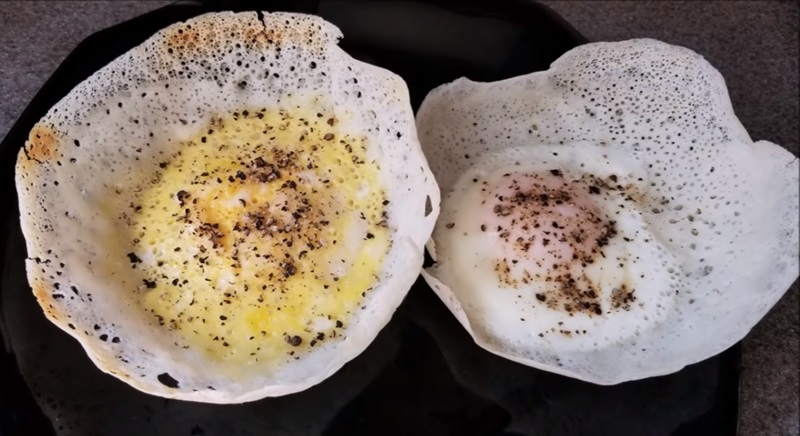
Appam, also known as aappam, emerges as a delicate and thin pancake with its roots intertwined with the culinary traditions of South India and Sri Lanka. This culinary delight is meticulously crafted from a fermented rice batter enriched with the creamy essence of coconut milk. The traditional cooking vessel for appam is the appachatti, a deep pan resembling a wok, ensuring the distinctive shape and texture of this beloved dish. Native to the Indian states of Kerala and Tamil Nadu, as well as Sri Lanka, appam holds a revered place in regional cuisine.
Frequently gracing the breakfast or dinner table, appam is not just a culinary creation but a cultural emblem. Its preparation involves an artful fusion of fermented rice batter and coconut milk, resulting in a pancake that encapsulates the essence of South Indian and Sri Lankan gastronomy. Often adorned with various toppings, such as a luscious egg, appam stands as a versatile and cherished dish, epitomizing the balance of flavors and textures that characterizes the rich tapestry of these culinary landscapes.
Chicken Curry
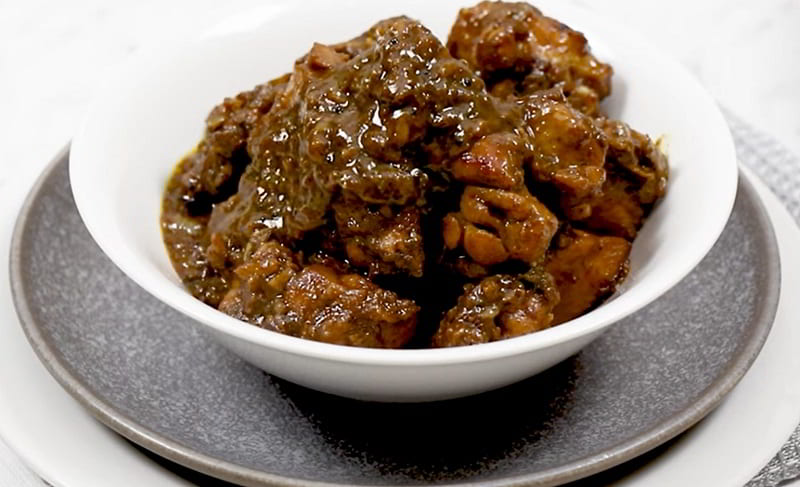
Chicken curry, a culinary masterpiece hailing from South Asia, particularly India, has woven its aromatic and flavorful tapestry across diverse global kitchens, including the Indian subcontinent, Southeast Asia, Great Britain, the Caribbean, the Arabian Peninsula, and even Japan. This culinary delight is a quintessential representation of the rich and varied curry traditions.
In its authentic form, a chicken curry from the Indian subcontinent involves stewing tender chicken pieces in a luscious blend of onion- and tomato-based sauce. The symphony of flavors includes garlic, chili peppers, tomato puree, ginger, and an exquisite array of spices like coriander, cinnamon, turmeric, cumin, and cardamom. The result is a harmonious infusion that tantalizes the taste buds with its richness and depth.
Beyond the borders of South Asia, chicken curry takes on different nuances, often utilizing the convenience of pre-made spice mixtures like curry powder. This global adaptation has transformed the dish into a beloved and accessible culinary gem, bridging cultures and creating a shared experience of the delightful and comforting flavors of chicken curry.
Sambar
-1707848857.jpg)
Sambar, a culinary treasure celebrated across Sri Lankan, South Indian, and Maldivian cuisines, stands as a flavorful lentil-based vegetable stew enriched with pigeon pea and tangy tamarind broth. This versatile dish has transcended regional borders, finding its way into Burmese cuisine, where it seamlessly complements the vibrant array of Burmese curries.
The heart of sambar lies in its preparation, where a harmonious marriage of lentils, vegetables, and a distinctive broth takes place. Pigeon peas contribute a rich and velvety texture to the stew, while tamarind lends its characteristic tanginess, elevating the flavors to new heights. The medley of vegetables adds a vibrant spectrum of colors and nutritional goodness to this wholesome concoction.
In Sri Lanka and South India, sambar is a cherished part of daily meals, often served with rice, dosa, idli, or vada. Its popularity extends to Maldivian kitchens, where the nuanced flavors of this lentil-based delight have found a place in the hearts of food enthusiasts.
Across these diverse culinary landscapes, sambar remains a culinary masterpiece, embodying the essence of comfort, tradition, and the delightful amalgamation of flavors that continue to captivate palates around the world.
Kottu
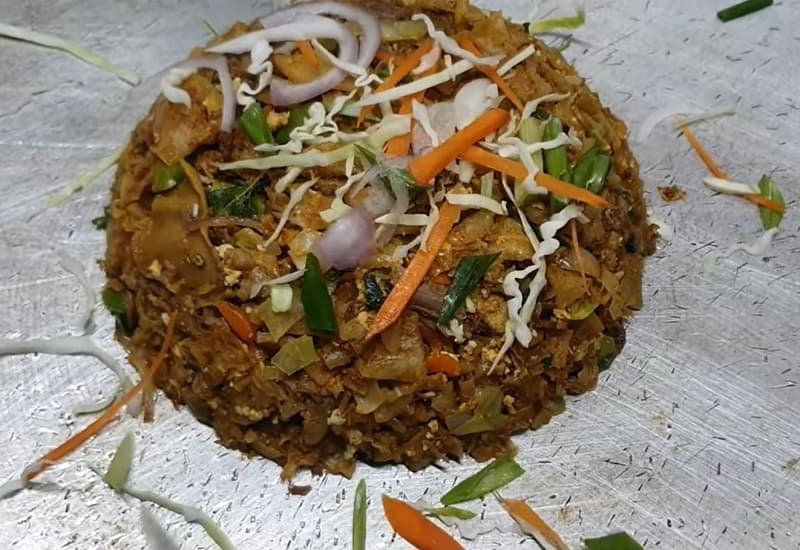
Kottu Roti, a culinary gem hailing from the vibrant tapestry of Sri Lankan cuisine, presents a delightful medley of flavors and textures. This dish, alternately spelled as Kothu Roti, intricately weaves together chopped roti with a choice of flavorful meat curry—be it succulent beef, mutton, chicken, pork, or delectable seafood. Complemented by the harmonious addition of scrambled eggs, onions, and a tantalizing hint of chillies, this ensemble transforms into a culinary symphony.
The preparation of Kottu Roti is a spectacle in itself, as skilled chefs deftly chop the ingredients on a sizzling griddle, utilizing special cleavers. The rhythmic clatter of blades becomes a prelude to the gastronomic delight that awaits.
Beyond Sri Lanka, a kindred variation known as Kothu Parotta graces the tables of South Indian states like Tamil Nadu and Kerala. Here, the dish incorporates parotta in lieu of roti, offering a unique twist on the Sri Lankan classic.
Internationally, Kottu Roti has traversed borders, finding its place in restaurants where Tamil, Sinhalese, and Malayali diaspora populations reside. It stands as a testament to the global allure of Sri Lankan culinary expertise, captivating palates and hearts far beyond its island origins.
Upma
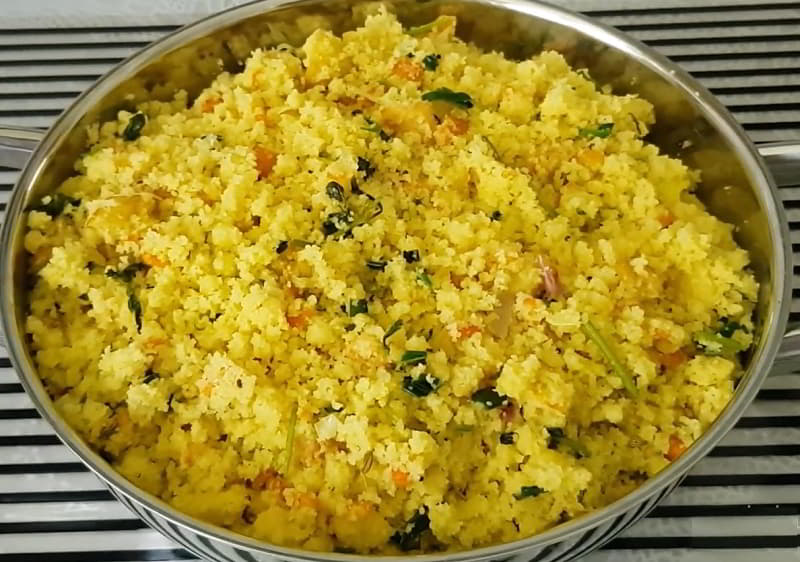
Upma, a breakfast classic originating from the diverse culinary landscape of the Indian subcontinent, holds a cherished place in the morning rituals of regions such as Tamil Nadu, Kerala, Maharashtra, Telangana, Andhra Pradesh, Karnataka, and Sri Lankan Tamil communities. This dish, also known as uppumavu or uppittu, is a savory porridge crafted from dry-roasted semolina or coarse rice flour, offering a comforting start to the day.
The artful preparation of Upma involves a symphony of seasonings and vegetables, each contributing to the dish's rich tapestry of flavors. The versatile nature of Upma allows for customization, with individuals incorporating their preferred spices and vegetables, adding a personal touch to this breakfast delight.
In Tamil Nadu, Kerala, and beyond, Upma has become a breakfast staple, reflecting the culinary diversity and creativity embedded in the subcontinent's food traditions. Whether enjoyed with a steaming cup of chai or relished on its own, Upma stands as a testament to the artistry of regional breakfasts, bringing communities together through a shared love for this warm and nourishing dish.
South Asian Pickle

South Asian pickle, a culinary treasure cherished across the diverse tapestry of the region, is a delectable concoction of vegetables and fruits preserved in a tantalizing blend of vinegar, edible oils, brine, and an array of South Asian spices. This pickled delight, known as acharu in Sinhala and oorugai in Tamil, showcases the rich culinary heritage of South Asia with its myriad regional variations.
The art of making South Asian pickles involves the careful interplay of flavors, as vegetables and fruits are transformed into tangy, spicy, and savory delights. The use of aromatic spices adds depth to the pickling process, creating a symphony of tastes that captivates the palate. Whether enjoyed as a condiment, a side dish, or a standalone treat, South Asian pickles reflect the vibrant diversity of the region's gastronomic traditions, bringing a burst of flavor to meals and uniting communities through a shared love for this zesty culinary creation.
Sharbat
-1703160449.jpg)
Sharbat, a refreshing elixir woven into the fabric of culinary traditions, is a sweet cordial that tantalizes the taste buds. This chilled beverage, cherished across the globe, is a symphony of flavors derived from fruits or flower petals. Whether served in concentrated form with a spoon or diluted with water, sharbat offers a delightful sensory experience.
In homes spanning Sri Lanka, the Arab world, Iran, Turkey, Afghanistan, Bosnia, Pakistan, Bangladesh, and India, sharbat takes on diverse forms, featuring ingredients like sandalwood, bael, hibiscus, basil seeds, lemon, pineapple, rose water, fresh rose petals, grape, falsa, orange, mango, and chia seeds. This concoction holds a special place in the hearts of Muslims, often savored when breaking their fast during Ramadan.
In South India, a regional variant known as sarbbath, popular in Tamil Nadu, Kerala, and Andhra Pradesh, features a syrup of Indian sarsaparilla and lemon dissolved in milk or soda water. Meanwhile, in Indonesia, particularly Java, a drink named serbat takes center stage during Ramadan, with a renowned version blending cold water, simple syrup, and shredded cantaloupe, affectionately known as serbat blewah or cantaloupe sherbet. Sharbat, with its diverse formulations, stands as a beloved embodiment of cooling sweetness embraced across cultures and traditions.
Dodol
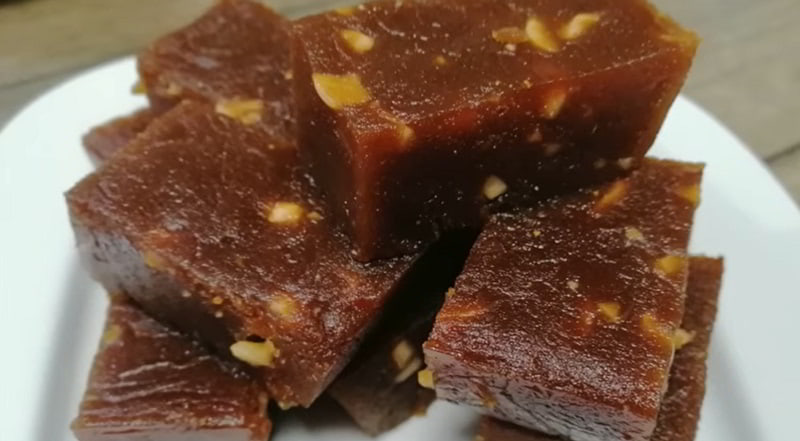
Dodol, a delectable toffee-like confection, rich in cultural significance, finds its roots in the vibrant culinary landscapes of Southeast Asia and the Indian subcontinent. Originating in Indonesia, this indulgent treat has woven itself into the sweet tapestry of diverse cuisines, earning popularity in Sri Lanka, Brunei, the Philippines, Malaysia, Thailand, Singapore, Tamilnadu, and Burma, where it goes by the name mont kalama.
Crafted with a harmonious blend of jaggery, coconut milk, and rice flour, dodol emerges as a thick, sticky, and irresistibly sweet delight. The meticulous combination of these ingredients creates a sensory experience that tantalizes taste buds and reflects the rich cultural diversity of the regions it graces. With its toffee-like texture and sweet allure, dodol stands as a testament to the artistry embedded in traditional confectionery, transcending borders and delighting palates across Southeast Asia and the Indian subcontinent.
Medu Vada
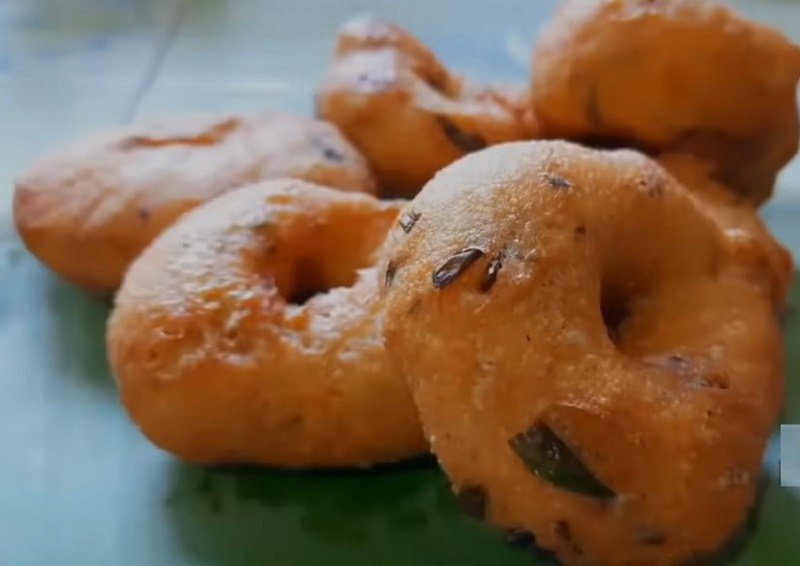
Medu vada, a beloved South Indian breakfast snack, is a culinary gem crafted from Vigna mungo, also known as black lentil. This delightful treat takes on a distinctive doughnut shape, boasting a perfect balance of a crispy exterior and a soft, pillowy interior. Revered in South Indian cuisine, medu vada has earned its place as a cherished item enjoyed during breakfast or as a satisfying snack. Its popularity extends beyond the borders of India, finding a warm embrace in the culinary landscape of Sri Lanka.
The preparation of medu vada involves the careful blending of black lentil to achieve a unique texture and flavor profile. Whether savored on its own or paired with chutneys and sambar, this iconic South Indian snack showcases the culinary prowess that has made it a staple in the hearts and palates of those who relish the diverse and flavorful offerings of South Asian cuisine.
Nian Gao
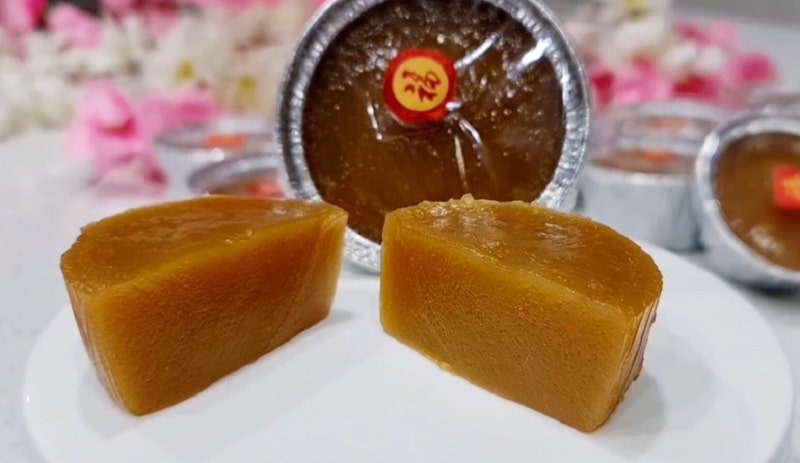
Nian gao, known as year cake or Chinese New Year's cake, is a delectable culinary creation crafted from glutinous rice flour, revered in Chinese cuisine as a symbolic treat. This rice cake, symbolizing prosperity and good fortune, has its roots in China but has extended its influence to various Southeast Asian countries, including Sri Lanka, through the diaspora of the Chinese community.
In Sri Lanka, the Chinese culinary influence has given rise to a delightful variant known as seenakku, a glutinous rice cake with Malay origins. Embraced by both the Sinhalese and Malay communities, seenakku has become a popular sweet treat, often served with the delightful addition of grated coconut. In the Sri Lankan Malay community, it goes by the name cheena kueh, showcasing the cultural intersections that have shaped the diverse and flavorful culinary landscape of the region. Seenakku stands as a testament to the fusion of Chinese and Malay culinary traditions, creating a unique and cherished sweet delight in Sri Lankan cuisine.
Lamprais
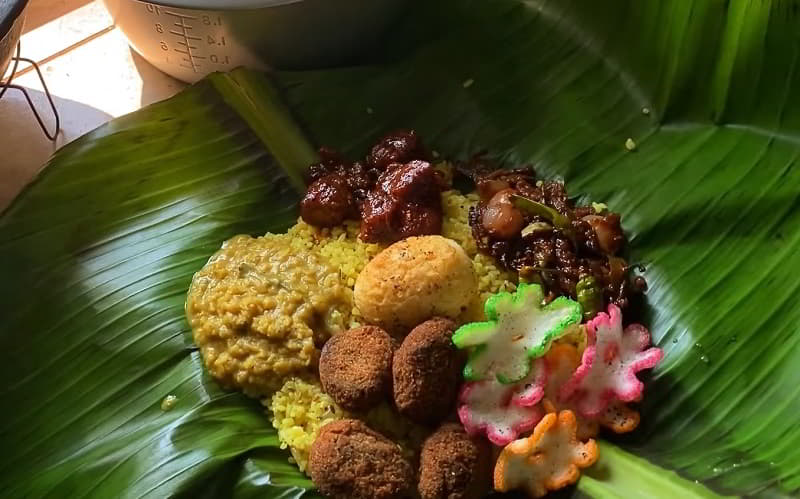
Lamprais is a well-loved rice dish from Sri Lanka that boasts a delightful medley of flavors and spices. Its name originates from the Dutch word "lomprijst," which means a packet of food. This dish serves as a testament to the country's colonial past and its ability to fuse various culinary influences. The main component of lamprais is a fragrant and spicy rice base, typically prepared with basmati rice, cooked in a flavorful broth infused with aromatic spices like cloves, cardamom, cinnamon, and curry leaves. Wrapped carefully in a banana leaf, the rice is accompanied by a selection of ingredients that are cooked to perfection. These accompaniments often include meat options like chicken, beef, or pork, as well as a mix of vegetables such as brinjal (eggplant), ash plantain, and frikkadels (Dutch-style meatballs).
The true beauty of lamprais lies in its slow-cooking process, allowing the flavors to meld together and permeate each bite. The banana leaf not only imparts a subtle aroma but also helps in preserving the moisture and tenderness of the meat and vegetables. Due to the time and effort required to prepare this dish, it is typically enjoyed during special occasions and gatherings.
Lamprais truly epitomizes Sri Lankan cuisine, showcasing the country's diverse culinary heritage and the art of skillfully blending spices to create an irresistible and unforgettable rice dish.
Watalappam
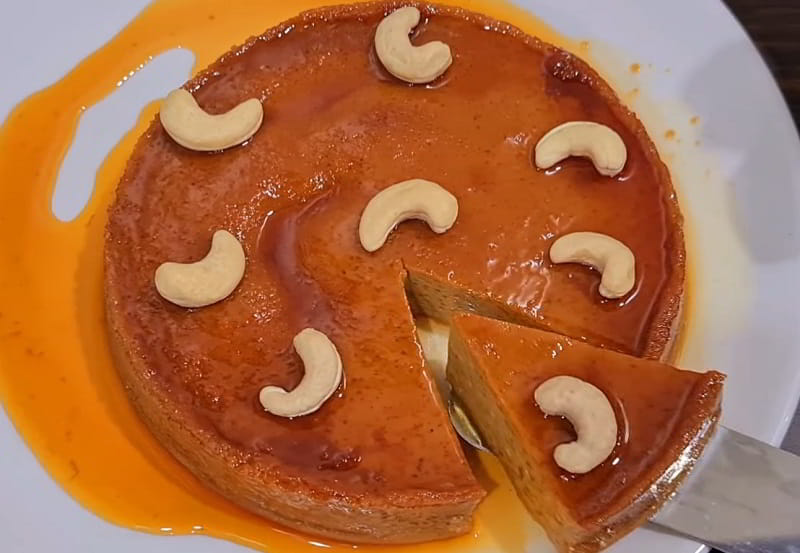
Watalappam, a luscious coconut custard pudding, serves as a testament to the rich cultural tapestry woven into Sri Lankan cuisine. Crafted with a harmonious blend of coconut milk or condensed milk, eggs, cashew nuts, jaggery, and an aromatic medley of spices like cloves, cardamom, and nutmeg, this dessert embodies the culinary finesse of the island.
Believed to have been introduced by Sri Lankan Malays during the 18th century, who migrated from Indonesia under Dutch rule, Watalappam's name may trace its roots to the Tamil words Vattil (cup) and Appam (cake), morphing into Vatillappam (cup cake). However, the dish's true origin likely lies in a Malay delicacy called serikaya—a steamed custard with eggs, coconut milk, palm sugar, and pandan leaves, highlighting the shared culinary history.
Possibly influenced by the Dutch word "Vla," meaning custard, and adapted by the Moors, the name vattil-appan encapsulates this delectable creation. Watalappam has become synonymous with Sri Lanka's Muslim community, gracing the tables during Eid al-Fitr and other festive occasions. With its rich flavors and cultural significance, Watalappam beautifully captures the essence of Sri Lankan culinary heritage.
Tapioca Chip
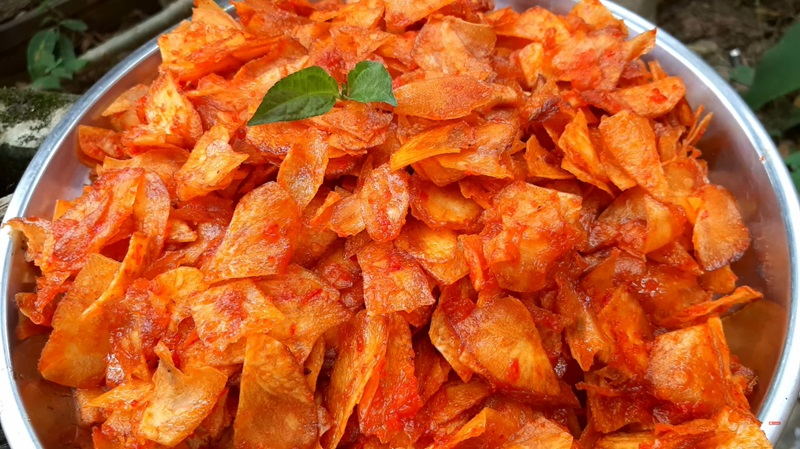
Tapioca chips, a beloved snack, emerge from thin wafers of deep-fried cassava root, creating a delightful treat celebrated in South India, Sri Lanka, Indonesia (as kripik singkong), and Malaysia (kerepek ubi). Widely savored in regions like Sri Lanka, Tamil Nadu, Kerala, and Karnataka, these chips offer a unique culinary experience.
Crafted from cassava, these chips boast a satisfying crunch, elevating them beyond the texture of banana chips and potato chips. Their rich flavor profile, characterized by the inherent taste of cassava, sets them apart as a popular carbohydrate-rich snack.
In Sri Lanka and other South Indian regions, tapioca chips are available in both non-spicy and spicy variants, with the latter featuring red chili pepper powder and an array of aromatic spices. The spiciness adds an extra layer of zest, enhancing the overall snacking experience.
With their irresistible texture and flavor, tapioca chips have become a beloved part of the snack landscape, offering a crunchy indulgence that captivates taste buds across diverse culinary traditions.
Yellow Rice
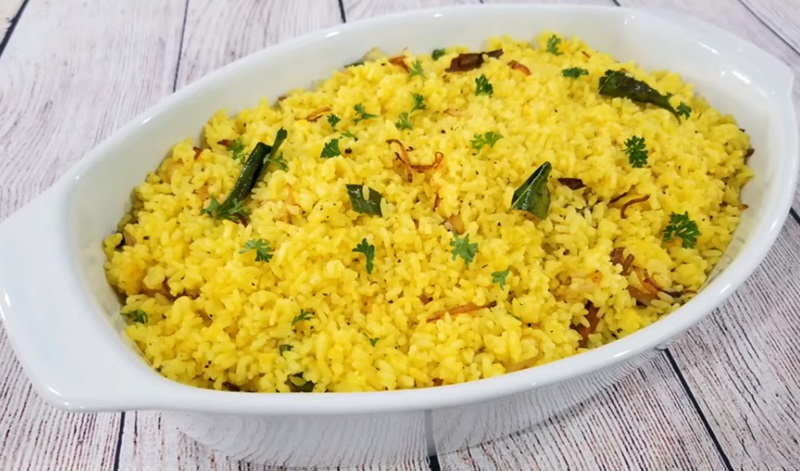
Yellow rice, a culinary masterpiece celebrated across diverse cultures, is a traditional dish distinguished by its vibrant yellow hue. Crafted from white rice, the golden color is imparted by the infusion of annatto, saffron, or turmeric – ingredients carefully chosen to enliven the rice with their warm tones.
In Sri Lanka, this golden delight is known as kaha buth, weaving together influences from both Indonesian and Sri Lankan culinary traditions. The aromatic and visually captivating rice variety stands as a testament to the island's rich tapestry of flavors.
Meanwhile, in South Africa, the Cape Malay community has embraced the art of crafting yellow rice. Influenced by the intricate flavors of Indonesian cuisine, South African yellow rice is a unique blend of sweetness, incorporating sugar, raisins, and cinnamon. This delightful combination transforms the rice into a sweet and aromatic accompaniment, perfectly complementing savory dishes and curries.
Dadar Gulung
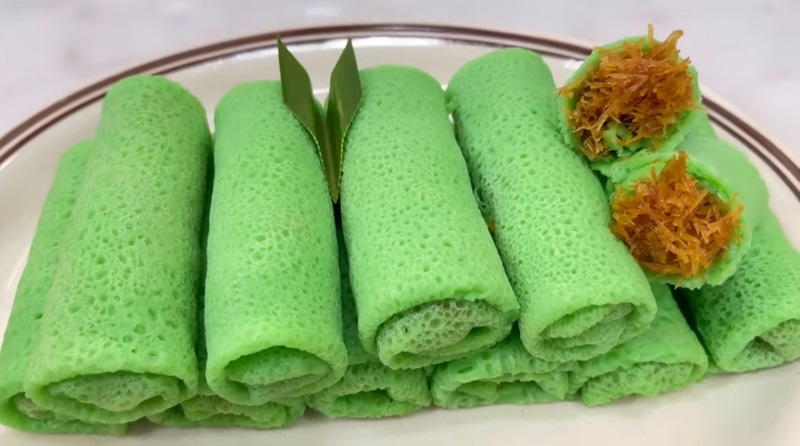
Dadar gulung, an esteemed traditional kue, stands as a delightful symbol of Indonesian culinary finesse. Celebrated as an Indonesian coconut pancake, this sweet treat has earned its place as a popular snack, particularly in the vibrant culture of Java.
The vibrant green hue of this delectable pancake is achieved through the careful infusion of daun suji or pandan leaves, highlighting the meticulous attention to detail in its crafting. This green-colored folded omelette or pancake is meticulously crafted from rice flour and skillfully filled with a delectable combination of grated coconut and palm sugar.
Embracing the rich culinary heritage, dadar gulung has not only captured the hearts of Indonesians but has also found a place in the culinary landscapes of Malaysia and Brunei. Across the seas, in Sri Lanka, it goes by the name surul appam, underscoring its widespread appeal and cultural significance in the Southeast Asian region.
Pol Sambol
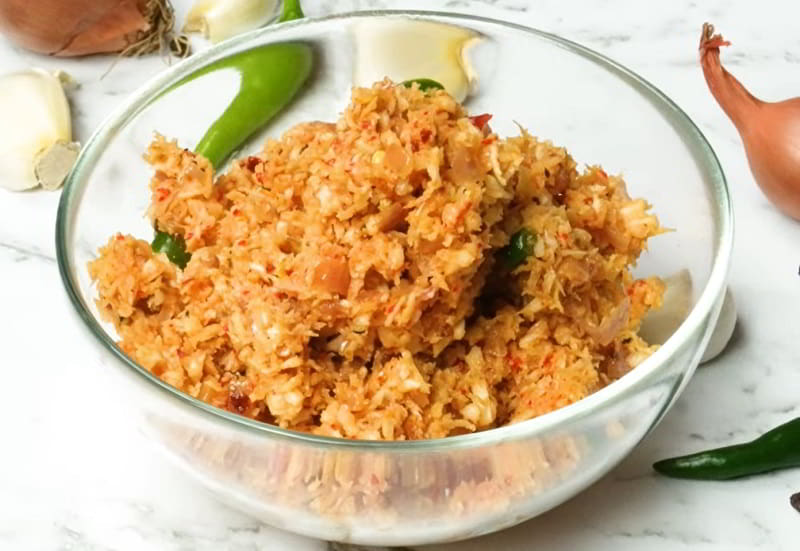
Pol sambol, also known as thenkai sambal, stands as a quintessential Sri Lankan dish, cherished as a delightful accompaniment to string hoppers, rice, hoppers, and curries. This coconut relish embodies a harmonious blend of freshly grated coconut, dried whole chilies or chili powder, shallots, lime juice, and salt, creating a flavor profile that is both vibrant and robust.
Traditional preparation involves grinding these ingredients on a granite block, known as a miris gala, using a granite rolling-pin. Alternatively, Maldives fish, a smoked and cured tuna available in chips or flakes, can be incorporated for added depth. This variation, known as badapu pol sambol, introduces an additional layer of flavor through the sautéing process, involving curry leaves, mustard seeds, and sliced onions.
Pol sambol encapsulates the essence of Sri Lankan culinary heritage, adding a burst of texture and spice to a variety of dishes. Whether enjoyed with the softness of string hoppers or the staple simplicity of rice and curries, this coconut relish is a testament to the country's rich gastronomic tapestry.
Kiribath
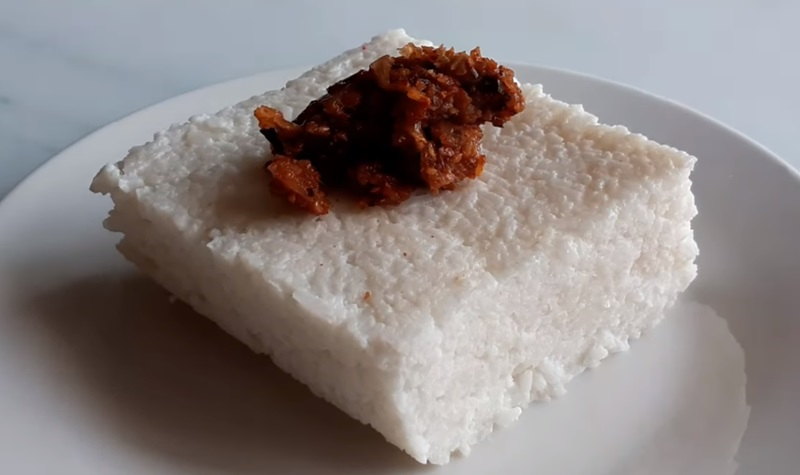
Kiribath, meaning milk rice, occupies a cherished place in Sri Lankan culinary traditions, resonating deeply with both the hearts and taste buds of its people. This dish, frequently prepared during auspicious occasions and festive celebrations like the New Year, encapsulates the essence of joy and togetherness.
The preparation involves cooking rice in a harmonious blend of coconut milk and water, resulting in a luxuriously creamy texture. While kiribath is commonly enjoyed as a breakfast staple, its versatility extends to serving as a main meal or even a dessert. The cooked rice is skillfully shaped into a square or rectangular cake and then cut into diamond-shaped pieces before being served.
The accompaniments play a crucial role in elevating the kiribath experience. Paired with savory or spicy condiments such as lunu miris (spicy onion and chili sambal), seeni sambal (sweet and spicy caramelized onion relish), or fish curry, kiribath offers a delightful combination of creamy, slightly sweet rice and flavorful condiments, creating a culinary harmony that is both comforting and satisfying.
Beyond its gastronomic appeal, kiribath serves as a symbol of prosperity and good luck, fostering unity and enjoyment across all age groups, making it an integral part of Sri Lanka's cultural heritage.
Kalu Dodol
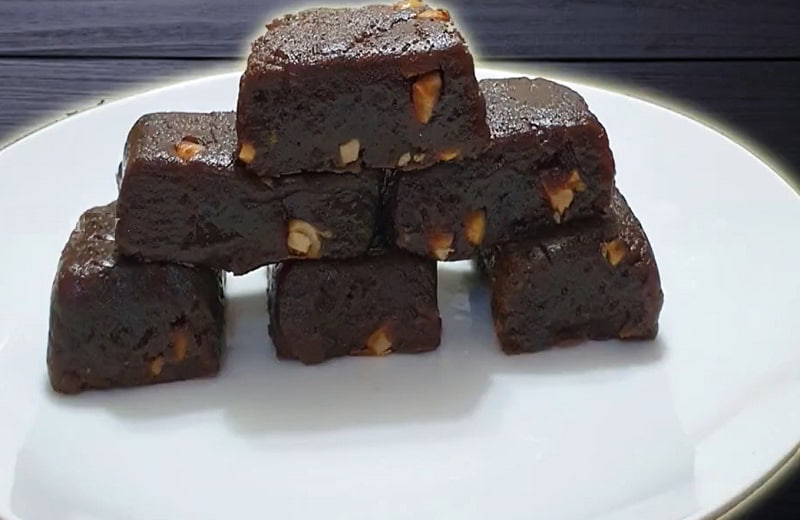
Kalu Dodol, a cherished sweet delicacy, holds a special place in Sri Lankan culinary traditions. This delectable dish, a variant of dodol, is renowned for its rich and sticky consistency. The key components include kithul jaggery, derived from the sap of the toddy palm, rice flour, and luscious coconut milk.
The preparation of Kalu Dodol is a meticulous and time-intensive process, showcasing the culinary expertise and dedication of those who craft this delectable treat. The Hambanthota area, in particular, has gained fame for its expertise in producing Kalu Dodol, becoming synonymous with the authentic and traditional preparation of this sweet delight.
The dark and sticky texture of Kalu Dodol, along with the unique combination of kithul jaggery and coconut milk, contributes to its distinct flavor profile. Often associated with festive occasions, celebrations, and special gatherings, Kalu Dodol stands as a symbol of Sri Lanka's culinary heritage, offering a sweet and indulgent experience that captivates the senses.
Kokis

Kokis, a deep-fried culinary delight, is a prominent fixture in Sri Lankan cuisine, particularly during the festive celebrations of Sinhala New Year. This traditional dish, known for its crispiness, is crafted from a simple yet flavorful combination of rice flour and coconut milk.
Despite its deeply rooted presence in Sri Lankan culinary traditions, Kokis is believed to have its origins intertwined with Dutch influence. The dish's evolution showcases the cultural amalgamation that has shaped Sri Lanka's diverse food landscape over the years.
The significance of Kokis extends beyond its delicious taste, as it takes center stage in the joyous festivities of Sinhala New Year. The preparation of Kokis involves deep-frying the batter to achieve its distinctive texture and golden-brown hue. The resulting crispy and intricately shaped Kokis delights the taste buds, making it a beloved treat enjoyed by locals and a symbol of cultural celebration during special occasions.
Breudher

Breudher, a cherished delicacy in Sri Lankan Dutch Burgher culinary heritage, is a buttery yeast cake that carries the delightful fusion of Dutch influence and local flavors. The cake, pronounced as "broo-dhuh," is characterized by its distinctive ring shape with a central cylindrical hole, achieved through baking in a heavy brass or iron mould with deep grooves.
This traditional recipe, passed down through generations, features a mix of bread dough, sugar, butter, nutmeg, eggs, milk, and raisins or sultanas. The result is a unique bread-like cake with a subtle yeasty undertone, creating a harmonious blend of textures and flavors.
Breudher holds special significance during festive occasions, particularly Christmas breakfast and New Year's Day. Served in slices, adorned with butter, and accompanied by Dutch Edam cheese or fresh fruit like green-skinned bananas, it embodies the cultural richness and culinary traditions of the Sri Lankan Dutch Burgher community. The cake's fluted design and time-honored preparation make Breudher a symbol of cultural continuity and festive joy in Sri Lankan celebrations.
Koththamalli
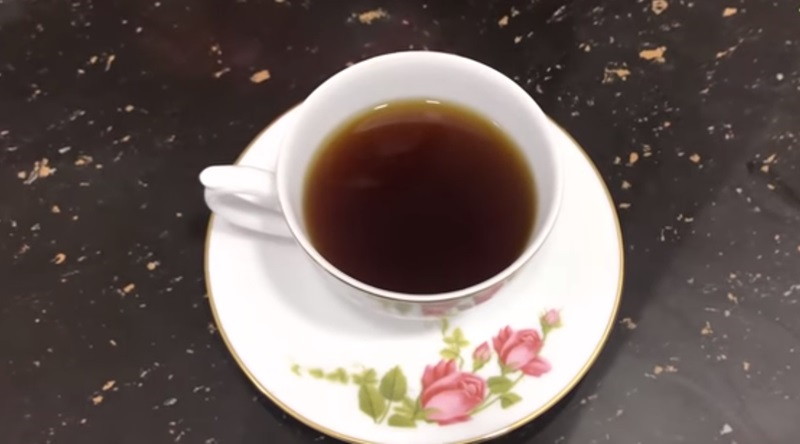
Koththamalli tea, a revered beverage in Sri Lankan culture, embodies the fusion of tradition and natural healing practices. Crafted by steeping coriander seeds and ginger, this infusion is more than a comforting drink; it serves as a time-honored remedy, especially cherished for alleviating symptoms of the common cold.
Coriander and ginger, renowned in Ayurvedic traditions, contribute not only to the tea's soothing aroma but also to its potential health benefits. The infusion reflects the deep-rooted connection between Sri Lankans and their cultural heritage, where natural ingredients play a pivotal role in traditional remedies.
Beyond being a warm and calming beverage, Koththamalli tea symbolizes the seamless integration of Ayurvedic wisdom into everyday life. It highlights the holistic approach to well-being and showcases the significance of herbal infusions in Sri Lankan households. This traditional elixir not only offers a moment of respite but also stands as a testament to the enduring practices that link Sri Lankans to the healing power of nature.
Kola Kanda
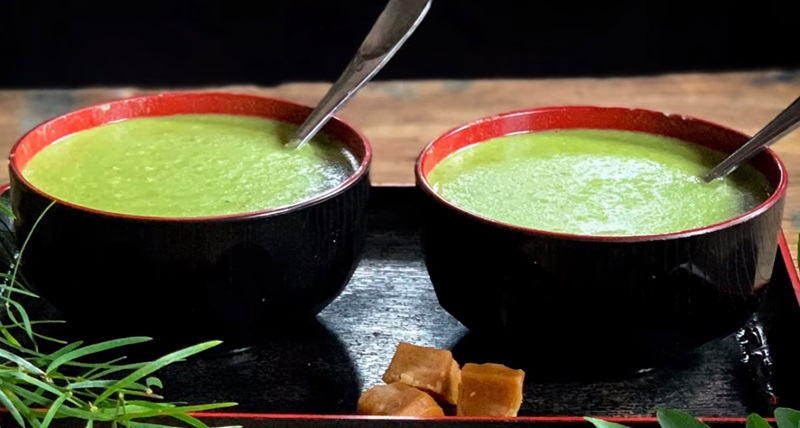
Kola kanda, a revered Sri Lankan dish, is a nourishing herbal congee that seamlessly intertwines culinary and medicinal practices. Crafted from raw rice, coconut milk, and the invigorating juice of medicinally esteemed leafy greens, this gruel has deep-rooted significance in Sri Lankan households.
The selection of leaves, including karapincha, gotukola, iramusu, welpenela, Polpala, hatawariya, and ranawara, imparts distinctive flavors and therapeutic properties based on the desired health outcome. Each leaf is carefully chosen, reflecting a profound understanding of herbal remedies passed down through generations.
Typically served piping hot for breakfast, kola kanda embraces a harmonious blend of flavors and textures. To balance the inherent bitterness of the herbal leaves, a piece of jaggery, derived from palm sap, is often added. Beyond its culinary allure, kola kanda embodies a holistic approach to well-being, where traditional wisdom meets the culinary arts, creating a dish that not only satisfies the palate but also seeks to prevent and cure ailments through the potent infusion of nature's bounty.
Love Cake
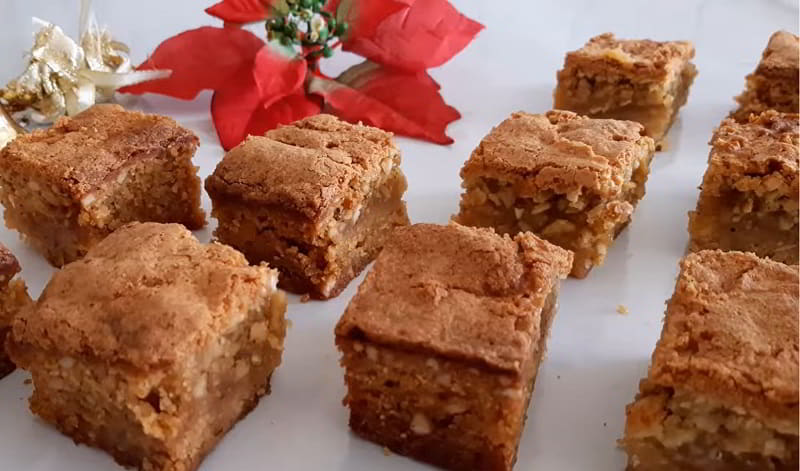
Love cake, also known as Bolo di Amor, stands as a cherished semolina delicacy embedded in the cultural tapestry of Sri Lanka, gracing special occasions like Christmas, birthdays, and weddings. Originally introduced by the Portuguese in the 16th century, it has evolved into a confectionery masterpiece uniquely Sri Lankan.
The recipe, handed down through generations, intricately weaves together influences from Portuguese cakes, featuring semolina, and local Sri Lankan spices such as nutmeg, cinnamon, and cardamom. The laborious process of grinding spices and nuts has earned the love cake its name, embodying a true culinary labor of love.
Typically wrapped in gold paper, love cakes are presented to guests as a symbol of warmth and celebration. This sweet delight not only reflects the historical interplay of cultures in Sri Lanka but also showcases the country's ability to transform foreign influences into a distinct culinary expression. Similar to the Singaporean sugee cake, love cake stands as a testament to the enduring fusion of traditions, making it a delightful and symbolic treat that transcends time and cultural borders.
Thala Guli
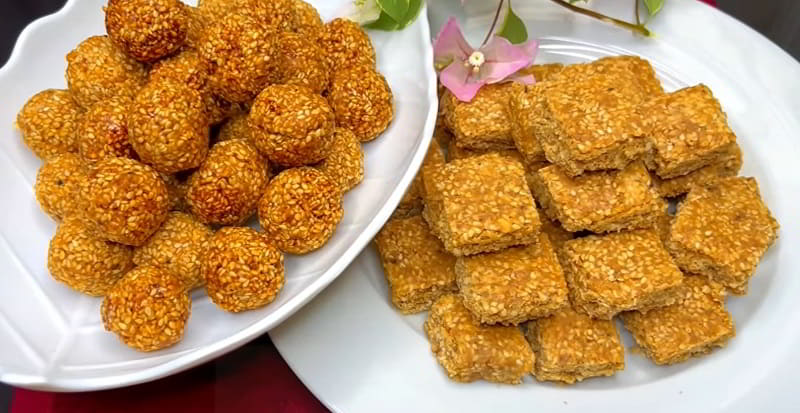
Thala Guli, also recognized as thala bola, gingelly balls, or rolls, stands as a quintessential Sri Lankan sweet delight, capturing the essence of tradition with its simple yet flavorful composition. The name is derived from "thala," meaning sesame in Sinhala, and "guli" or "boli," indicating whether these sweetmeats are shaped as rolls or balls.
Crafted with a harmonious blend of sesame seeds, salt, and jaggery (palm sugar), Thala Guli embodies the culinary heritage of Sri Lanka. The careful balance of these basic yet wholesome ingredients results in a delightful treat that encapsulates the rich flavors and textures of traditional Sri Lankan sweets.
In the northeastern region of Sri Lanka, these delectable bites go by the name ellu urundai or ellurundai in Tamil, translating to sesame balls. This alternative moniker reflects the widespread appreciation for this sweet creation across diverse linguistic and cultural communities in the island nation. Thala Guli not only tantalizes taste buds but also serves as a symbol of the cultural richness and shared culinary traditions that contribute to the vibrant tapestry of Sri Lankan heritage.
Kevum

Kevum, also referred to as Kavum, emerges as a quintessential Sri Lankan sweet, deeply rooted in the island's cultural fabric. This delightful treat, often termed "oil cake," is meticulously crafted using rice flour and kithul treacle, derived from the sap of the sugar-palm tree. Its preparation involves deep-frying, resulting in a confection with a perfect balance of crispiness and sweetness.
Signifying tradition and festivity, Kevum takes center stage during the celebrations of Sinhala and Tamil New Year. The practice of giving and savoring Kevum during these joyous occasions underscores its cultural significance and role as a cherished symbol of seasonal festivities.
While the core ingredients remain constant, Kevum boasts various regional and familial adaptations, with some variants incorporating additional elements to enhance its flavor profile. The intricate process of making Kevum reflects the commitment to preserving cultural practices, as each step carries the essence of Sri Lankan culinary heritage.
Whether enjoyed during New Year celebrations or relished as a sweet indulgence, Kevum embodies the spirit of festivity, bringing communities together in the shared joy of tradition and delicious culinary craftsmanship.
Seeni Sambol
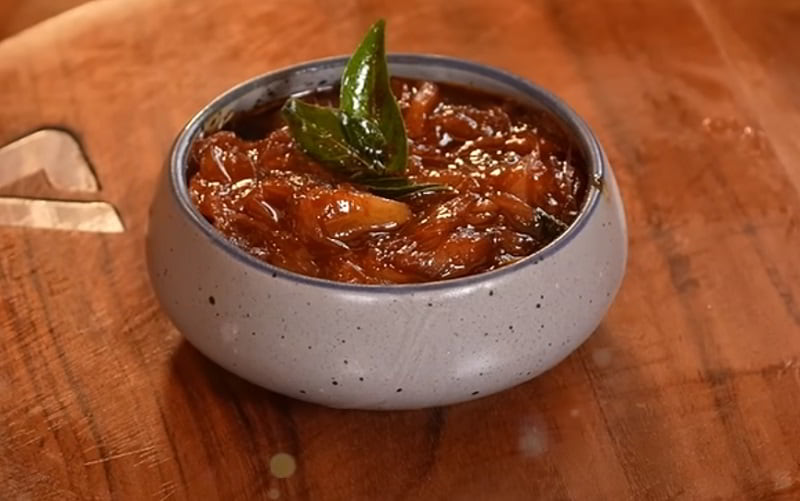
Seeni Sambol, a culinary gem in Sri Lankan cuisine, stands as a traditional condiment celebrated for its intricate blend of flavors—spicy, sweet, and aromatic. This caramelized onion chutney or relish takes center stage, imparting its rich profile to a variety of culinary delights.
The name Seeni Sambol echoes its key components, with seeni denoting sweetness or sugar, and sambol referring to sauce in Sinhala and Tamil languages. The fundamental ingredients include red chilies, sugar, tamarind juice, onions, and salt, creating a harmonious symphony of tastes.
This versatile condiment finds its place alongside culinary staples such as idiyappam (string hoppers), rice, curries, and appam (plain hoppers). It plays a pivotal role in iconic Sri Lankan dishes like lamprais and seeni banis, a brioche bun filled with the flavorful seeni sambol.
The art of crafting Seeni Sambol extends beyond the basic recipe, as variations may introduce elements like Maldives fish, cardamom, lemongrass, cinnamon, curry leaves, and cloves. Through its delightful complexity, Seeni Sambol not only enhances Sri Lankan dishes but also serves as a testament to the culinary richness deeply embedded in the island's cultural tapestry.
Dosi
-1707990028.jpg)
Dosi, a beloved Sri Lankan confection, is a delightful creation reminiscent of fruit preserves or candied fruit, delivering a burst of sweetness in every mouthful. This traditional delicacy entails a meticulous process wherein segmented fruit is gently boiled in sugar, fostering the crystallization of sugar both on the surface and within the succulent fruit pieces.
Traditionally enjoyed as a snack, whether during the day or as a post-meal treat, dosi holds a special place in Sri Lankan culinary traditions. Particularly significant among the Sri Lankan Malay community, dosi takes center stage in the vibrant celebrations of Eid al-Fitr, symbolizing the joyous conclusion of Ramadan. The confection also graces the tables of weddings, religious festivals, and various social functions, adding a touch of sweetness to these special occasions.
Dosi comes in various iterations, with popular versions featuring the addition of cardamom, cinnamon, or rose essence, each contributing unique aromatic notes. The quintessential puhul-dosi, with its sweet and light yellow hue, remains a favorite, often crafted from wintermelon (ash pumpkin). Through its diverse variations and cultural significance, dosi encapsulates the essence of sweet celebrations in Sri Lanka.
Odiyal
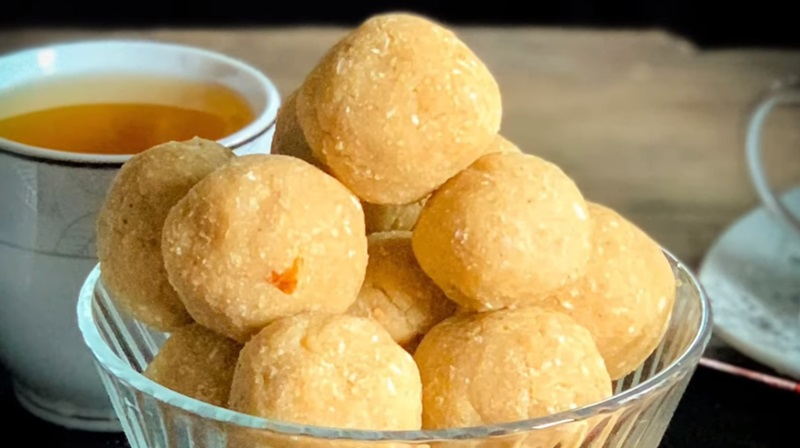
Odiyal, a robust and edible snack, is crafted from palmyra palm tubers, specifically the sprouts of the Palmyra palm. Typically, these tubers are split into halves and left to dry until they attain a hardened consistency. Additionally, Odiyal can take on another form known as Pulukodiyal, achieved through boiling and subsequent drying. Pulukodiyal becomes the basis for Pulukodiyal flour. This versatile ingredient plays a central role in various food products, including Odiyal chips, Odiyal kool, Odiyal pittu, Odiyal flour, and Palm posha. With a particular popularity in the Jaffna peninsula, Odiyal serves as a staple snack, reflecting the regional culinary preferences and the creative use of palmyra palm resources.
Mallung (Mallum)
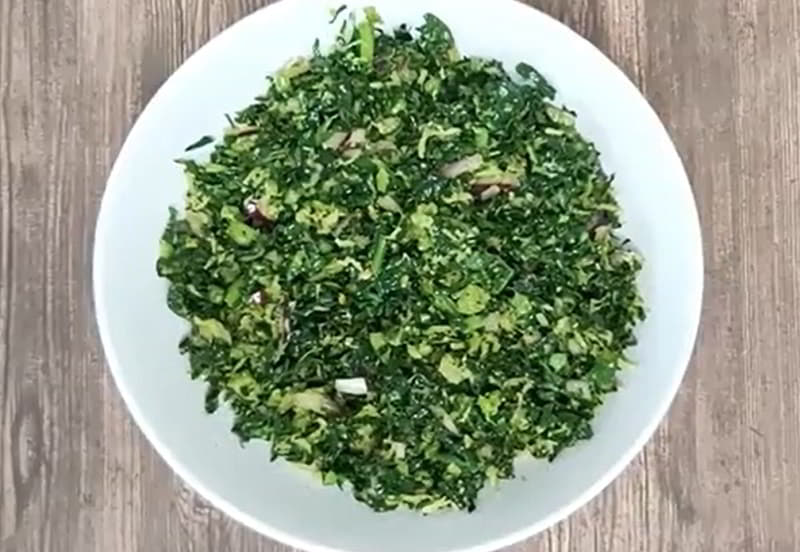
Mallung stands as a quintessential Sri Lankan dish characterized by finely chopped leafy green vegetables, skillfully sautéed and harmoniously blended with fresh coconut, a medley of spices, and a touch of chili. This flavorful concoction serves as a prevalent condiment in Sri Lankan cuisine, gracing almost every meal. Mallung's significance extends beyond its culinary appeal, as it serves as a vital source of daily nutrition, offering a consistent intake of essential vitamins.
The term mallung or mallum translates to wilted, reflecting the cooking process applied to the greens. The primary component of mallung is a leafy green vegetable, finely chopped and mixed with standard ingredients to enhance its flavor profile. Various plants contribute to mallung, including passion fruit leaves, cassia, watercress, or water spinach. In Western countries, substitutes like spinach, chard, cabbage, and kale are often employed to recreate the traditional Sri Lankan greens. Mallung not only satisfies the taste buds but also embodies a cultural practice of ensuring a balanced and nutritious diet through locally available ingredients.
Chocolate Biscuit Pudding

Chocolate biscuit pudding, affectionately known as CBP, holds a special place in Sri Lankan dessert culture. This delightful treat is crafted by layering milk-dipped Marie biscuits with luscious chocolate pudding or icing, creating a distinctive pattern that reveals itself when the dish is sliced. Best enjoyed chilled, the chocolate biscuit pudding offers a harmonious blend of textures and flavors. The alternating layers of biscuits and chocolate form a delectable fusion, while the addition of roasted or chopped cashew nuts provides a satisfying crunch. This sweet creation reflects Sri Lanka's culinary ingenuity, seamlessly blending simplicity and indulgence to produce a dessert that not only delights the palate but has also secured its place as a cherished classic in the nation's dessert offerings.
Lunumiris
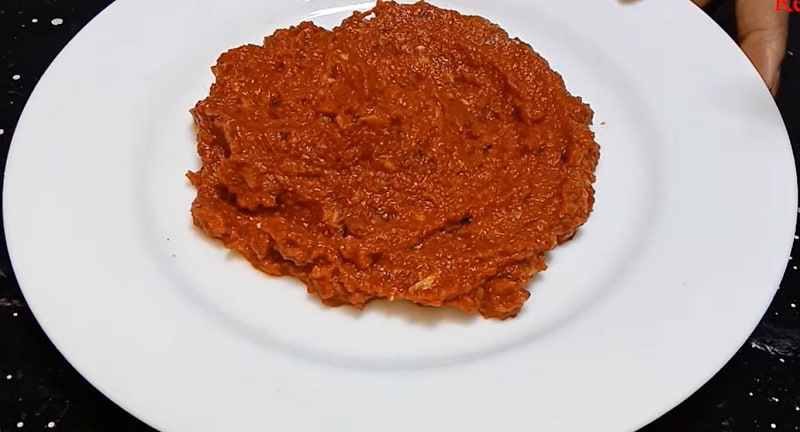
Lunumiris, translating to salt and chilies in Sinhalese, is a traditional Sri Lankan condiment crafted by blending ground chilies and salt into a paste. Sometimes referred to as katta sambol, it distinguishes itself from the latter, which is a separate spicy Sri Lankan sambol condiment. The classic lunumiris involves the meticulous mixing of ground chilies and salt, creating a versatile and fiery paste. Alternatively, katta sambol incorporates chili pepper, black pepper, shallots, sea salt, Maldives fish, and lime juice. Prepared using a mortar and pestle or a grind stone, this paste offers a spicy kick due to the addition of chili powder, enhancing the overall flavor profile.
Aluwa
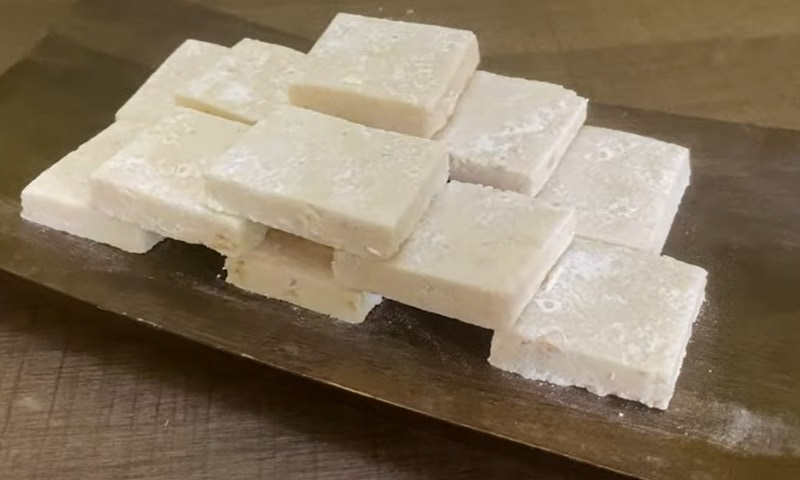
Aluwa, a delightful Sri Lankan sweet, is crafted from potatoes or roasted rice flour combined with cashew nuts, boiled treacle, and cardamom, resulting in a rich and flavorful treat. This confection takes on a flat, cookie-like form, often intricately shaped into diamonds or squares using a wooden mould. The preparation of aluwa involves a careful balance of ingredients, with the roasted rice flour or potatoes providing a distinctive texture and the boiled treacle infusing a sweet, caramelized essence. The addition of cashew nuts introduces a delightful crunch, while cardamom contributes a fragrant and aromatic note to the overall flavor profile. Served in carefully molded shapes, aluwa not only tantalizes the taste buds with its sweetness but also showcases the cultural artistry embedded in the presentation of traditional Sri Lankan sweets.
Ceylon (Curry)
-1707929536.jpg)
Ceylon curry, a flavorful culinary creation, is characterized by a distinctive blend of coconut, lime, and a specialized Ceylon curry powder. This unique family of curry recipes is known for its bold and spicy profile, earning it a "hot" classification on various culinary guides. The infusion of coconut brings a creamy richness, while lime adds a zesty and citrusy undertone to the dish. The carefully curated Ceylon curry powder contributes a medley of aromatic spices, resulting in a delectable and aromatic culinary experience that reflects the vibrant and diverse flavors of Sri Lankan cuisine.
Bibikkan
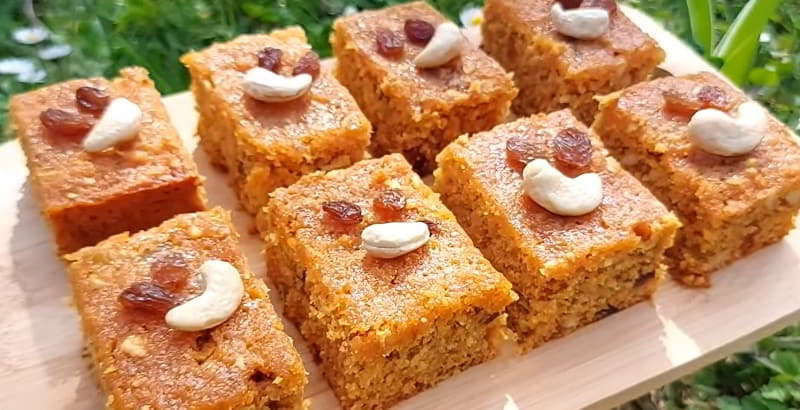
Bibikkan, a cherished Sri Lankan delicacy, stands as a testament to the island's rich culinary heritage. This traditional coconut cake, a luscious blend of shredded coconut, semolina, jaggery and an array of aromatic spices, serves as a symbol of joy during festive and religious celebrations. Traditionally associated with Christmas, Sinhala New Year's Eve, and Tamil New Year, Bibikkan has woven itself into the fabric of Sri Lankan traditions. Introduced by the Portuguese during their colonial era, Bibikkan has evolved into a beloved treat, embodying the fusion of culinary influences that have shaped the island's diverse and flavorful food culture. The dark, moist texture and the harmonious medley of ingredients make Bibikkan a delectable indulgence, enjoyed by locals and visitors alike, adding a touch of sweetness to special occasions and creating lasting memories in the hearts and palates of those who savor its unique taste.
Aasmi
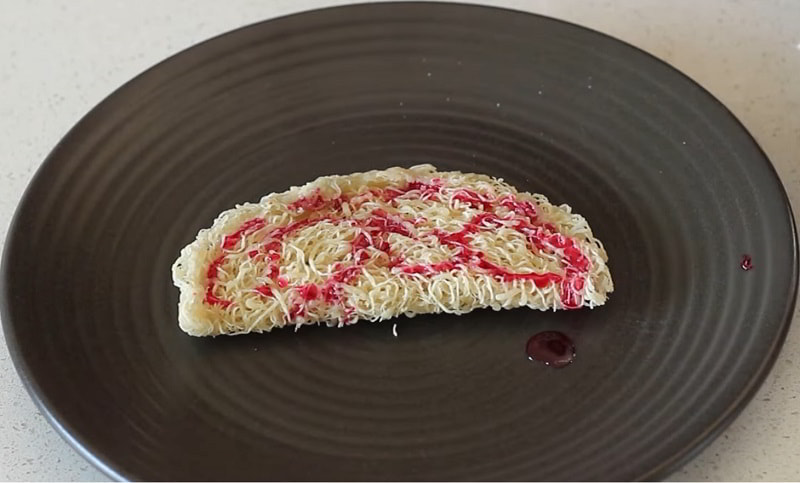
Aasmi, a cherished sweet snack deeply rooted in Sri Lankan culinary traditions, emerges as a delightful treat reserved for special occasions like Aluth Avurudda/Puthandu (Sinhalese/Tamil New Years), birthdays, and weddings. Crafted with a harmonious blend of rice flour and coconut milk, the batter is enriched with the essence of davul kurundu leaves (cinnamon leaves) or alternatively, okra juice. After the initial deep-frying in coconut oil, the delicacy undergoes a unique resting period before being fried again, enhancing its texture and flavor. To elevate the indulgence, Aasmi is crowned with a luscious sugar syrup infused with vibrant food coloring, creating an enticing visual appeal. This labor-intensive yet rewarding confection reflects the meticulous craftsmanship inherent in Sri Lankan sweets, preserving cultural authenticity and bringing forth a sense of joy and celebration with each crispy and sweet bite.
Athirasa
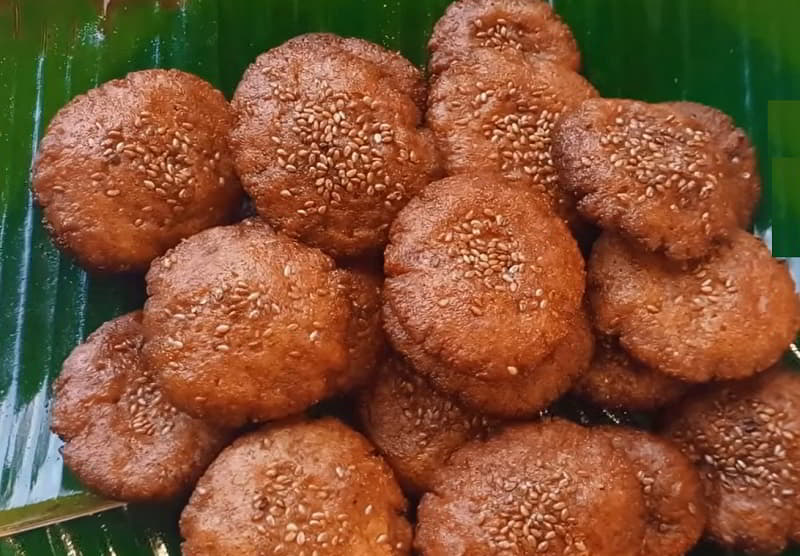
Athirasam, known as Amutharasam or Athiraha in Tamil, is a cherished sweet in Sri Lankan cuisine, embodying cultural richness and culinary delight. This sweet-cake, crafted with a blend of jaggery and rice flour, undergoes a transformation into a paste that is carefully flattened into circles and lovingly fried. Athirasa holds a special place in festive celebrations, gracing the table alongside other traditional sweets like Kokis, Kavum, and Aluwa. Beyond its presence in Sri Lankan culinary traditions, Athirasam shares its fame with Indian Diwali festivities, showcasing its versatility and significance in various cultural contexts. The artful preparation of Athirasam reflects the devotion to preserving culinary heritage, making it a cherished treat that brings joy and sweetness to special occasions.
Diyabath
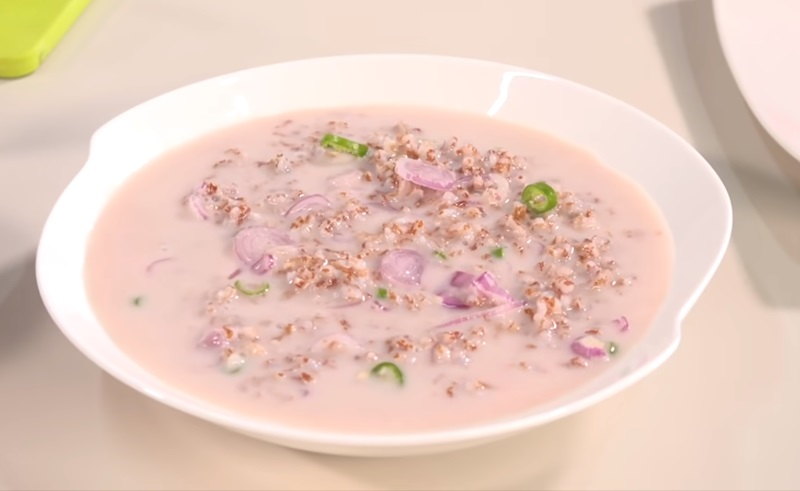
Diyabath, a distinctive cold soup, holds a special place in the breakfast traditions of Sri Lanka's indigenous communities. Crafted from fermented rice, left overnight to develop its unique flavor, Diyabath is a concoction of coconut milk, onions, garlic, and raw chili. While not a daily staple in modern lifestyles, it boasts health benefits such as a low glycemic index, anti-inflammatory properties, and a probiotic effect akin to curd.
Known as Palan Kanji or Old Porridge in southern India, its preparation varies slightly, with Indian renditions often omitting coconut milk due to cost considerations. In this version, a touch of smokiness is introduced by burning a piece of dried fish, adding a distinctive element to the rice porridge. Diyabath not only offers a sense of satiety with modest portions but also provides a soothing effect on gastric ulcers, making it a unique and culturally rich dish in Sri Lankan and Indian breakfast traditions.
Bolo Fiado
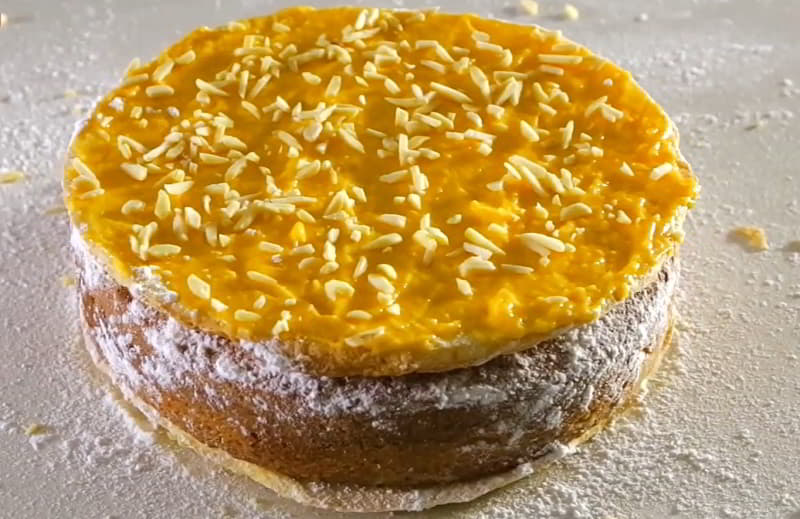
Bolo Fiado, or Bolo Folhado, stands as a delectable laminated cake in Sri Lankan culinary heritage. Comprising sweet pastry layers interlaced with a filling of cashew nuts, sugar, and fragrant rose water, this confection resembles a thick Mille-feuille or oversized Danish pastry. Its roots trace back to the 16th century when the Portuguese introduced it to the coastal regions of Sri Lanka, and over time, it has evolved into a unique local treat.
The name Bolo Fiado carries Portuguese influence, where bolo translates to cake, and folhado signifies a leaf or sheet. This cake, a cultural amalgamation, has found adaptation within the Burgher community, showcasing the dynamic evolution of culinary traditions in Sri Lanka. With each bite, Bolo Fiado embodies the rich history and fusion of flavors that make it a cherished and distinctive sweet treat in Sri Lankan culinary.
Thakkadi
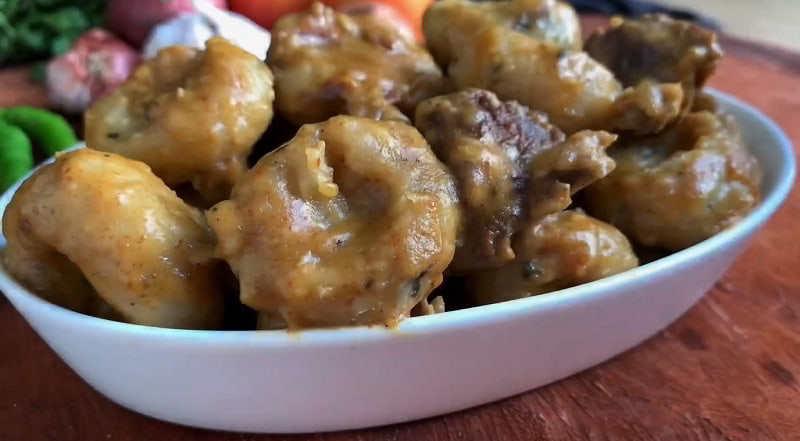
Thakkadi, a culinary gem originating from the Moor community in Sri Lanka, is a delectable dish that features rice balls or dumplings immersed in a flavorful sauce and cooked within a tantalizing mutton salna, a spicy gravy. The dish represents a harmonious blend of textures and tastes, showcasing the rich gastronomic heritage of the region.
To craft Thakkadi, steamed rice flour balls are prepared with a mix of ingredients including chopped curry leaves, finely sliced shallots, and shredded coconut. These rice balls are then immersed in a mutton salna, which is a spicy and aromatic stew typically made with beef, mutton, or chicken. The result is a mouthwatering dish that encapsulates the essence of Sri Lankan cuisine, with its diverse flavors and cultural influences.
Thakkadi not only delights the taste buds but also serves as a testament to the culinary traditions of the Moor community, contributing to the vibrant tapestry of Sri Lankan gastronomy.
Kiri Aluwa
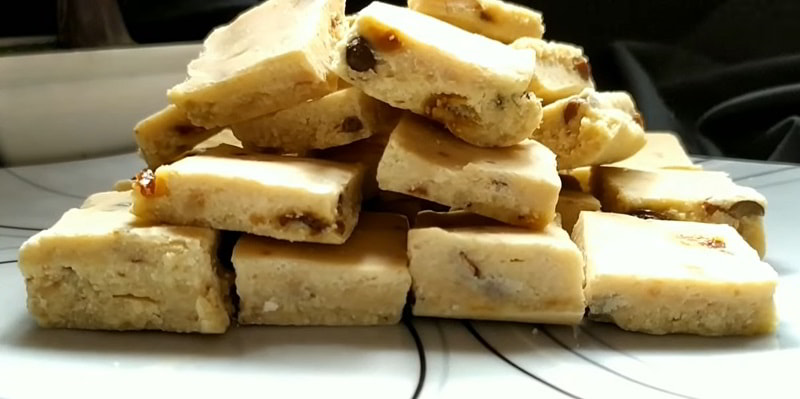
Kiri Aluwa, also known as milk toffee or kiri toffee, stands as a beloved traditional Sri Lankan delicacy, enchanting taste buds with its soft and caramelized texture. These delectable confections, shaped into petite squares, boast a delightful combination of sweetened condensed milk, sugar, and butter. The enchanting flavor profile can be further enhanced with spices like cinnamon, cardamom, or a hint of sea salt, offering a symphony of tastes in every bite.
Variations of Kiri Aluwa may feature delightful additions such as cashews and raisins, providing a delightful contrast to the creamy sweetness. This confection shares some similarities with the Scottish tablet, Quebecois Sucre à la crème, Dutch borstplaat, and South American tableta de leche.
Rooted in Sri Lankan culinary traditions, Kiri Aluwa may have evolved from the concept of bonda aluwa, a blend of rice flour, coconut, and jaggery. This enticing treat showcases the rich heritage of Sri Lankan sweets and adds a touch of sweetness to cultural celebrations and joyous occasions.
Kiri Hodi
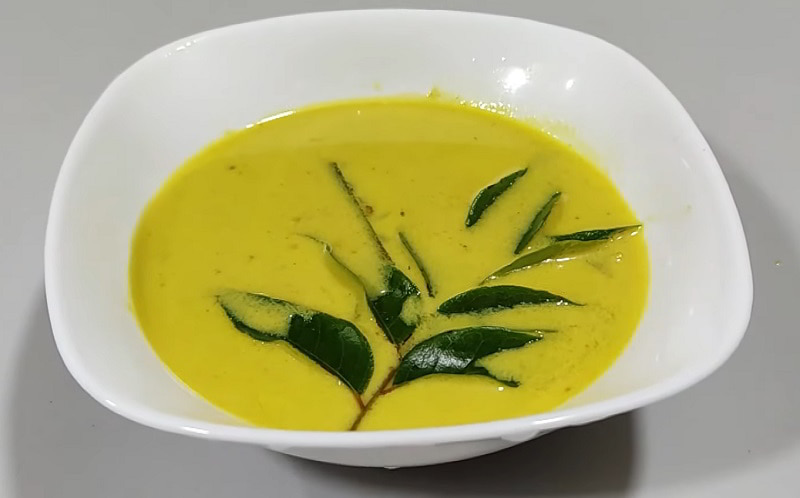
Kiri hodi, translating to milk curry, is a cherished and traditional Sri Lankan culinary gem, renowned for its fragrant coconut milk gravy. Crafted from a handful of essential ingredients, this dish is a staple, often enjoyed hot alongside pol sambola (coconut relish) or idiyappam (rice noodles). The versatility of kiri hodi shines through, with the option to enhance it by adding vegetables or fish for a heartier curry experience.
The beauty of kiri hodi lies in its adaptability, offering a canvas for culinary creativity. Each family's rendition carries a unique touch, shaped by the proportions of spices, chilies, and the inclusion of special ingredients like Maldives fish. Passed down through generations, this dish weaves a flavorful tapestry that reflects the diverse and rich culinary heritage of Sri Lanka. Whether enjoyed in its traditional form or with personal twists, kiri hodi stands as a comforting and aromatic delight, embodying the essence of Sri Lankan home-cooked meals.
Aggala
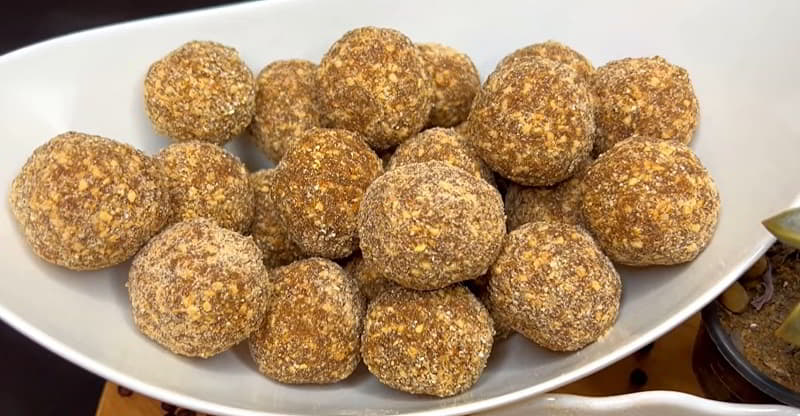
Aggala, a beloved traditional Sri Lankan sweet, captures the essence of sweet indulgence with its delightful sweet roasted rice balls. Crafted from a harmonious blend of ingredients, including coconut, rice, a hint of pepper, jaggery or treacle, these treats offer a delectable experience.
The preparation involves grinding sun-dried boiled rice into a powder or using rice flour, combining it with fresh shredded coconut, Kithul treacle, or shaved jaggery or sugar, pepper, and water until it forms a luscious paste. This mixture is then shaped into small balls and coated with rice powder or flour. For added flavor, some recipes incorporate cinnamon into the mix, while others enhance the outer layer with roasted sesame seeds.
Aggala stands as a cherished snack, symbolizing the artistry of Sri Lankan culinary traditions. Whether enjoyed on its own or as part of festive celebrations, these sweet rice balls embody the rich flavors and cultural heritage of Sri Lankan sweets.
Lavariya
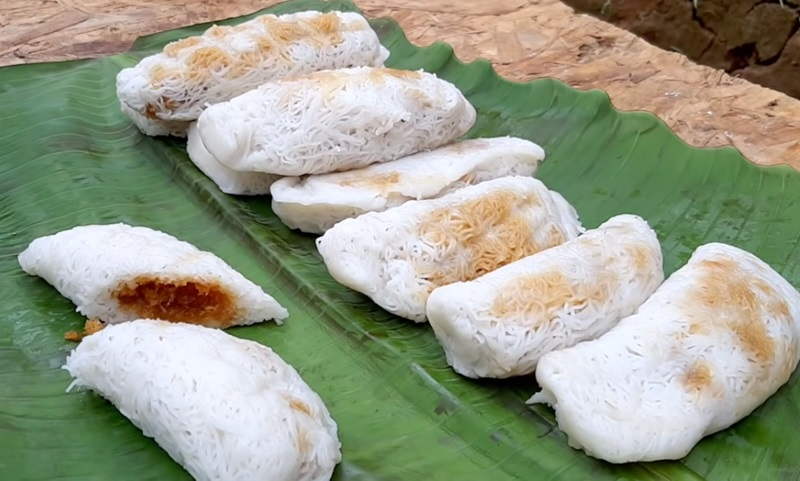
Lavariya, a beloved traditional Sri Lankan sweet dumpling, weaves together the rich flavors of caramelized coconut encased in a delicate string hopper (Idiyappam). This culinary gem is often savored during breakfast or in the afternoon, accompanied by tea and ripe bananas, making it a delightful treat for various occasions.
The process of crafting Lavariya involves the meticulous creation of vermicelli-style noodles by mixing rice flour with hot water, oil, and a touch of salt, creating a smooth dough. Using an 'idiyappam' press or a sieve, the thin noodles are extruded onto banana leaves. The filling, known as Pol Pani, features a delectable blend of grated coconut, moong dal, and jaggery syrup, forming a sweet concoction. This flavorful mixture is carefully placed within the rice flour noodles, taking the shape of a half moon. The entire creation is then lovingly wrapped in banana leaves and steamed to perfection before being served, offering a taste of Sri Lanka's culinary artistry.
Kakuluwo Curry
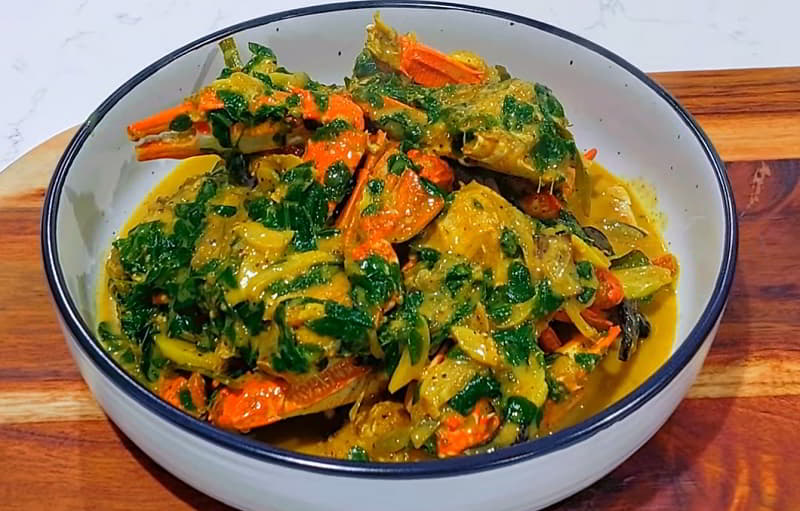
Kakuluwo curry, commonly referred to as Jaffna crab curry, stands as a quintessential Sri Lankan delicacy with its roots tracing back to the northern regions of the island. Revered for its bold and spicy flavors, this traditional dish has transcended its place of origin and gained popularity across Sri Lanka, particularly in coastal areas where seafood is a culinary staple. The star ingredient is either the blue swimmer or mud crab, expertly broken into smaller portions and simmered to perfection in a clay pot. The curry is enriched with a flavorful blend of seasonings and incorporates the distinctive seed pods of the drumstick tree.
Served alongside rice, pittu, or bread, Kakuluwo curry offers a sensory experience that captures the essence of Sri Lankan coastal cuisine. To complement its robust flavors, it is often enjoyed with the classic accompaniment of pol sambol, creating a harmonious and satisfying meal. This dish reflects the country's diverse culinary heritage, showcasing the art of crafting delectable and aromatic crab curry that has become a cherished part of Sri Lankan cooking.
Pol Pani
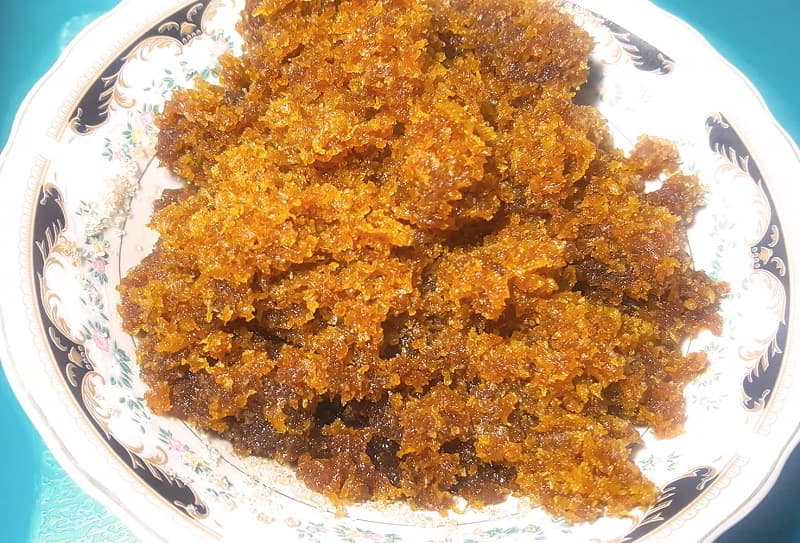
Pol Pani, a delightful Sri Lankan culinary element, is a filling crafted from coconut scrap, imparting a rich and aromatic essence to a variety of traditional sweets. This flavorful mixture serves as a key component in the preparation of Sri Lankan delicacies such as pancakes, lavariya, and halapa. The coconut scrap is meticulously processed to create a versatile filling that adds a distinctive texture and tropical sweetness to these delectable treats. Pol Pani showcases the ingenious use of coconut, a staple ingredient in Sri Lankan cuisine, contributing to the diverse array of flavors and textures found in the country's traditional sweets. This cherished filling not only enhances the taste but also represents the culinary creativity embedded in Sri Lanka's rich gastronomic heritage.
Malu Mirisata
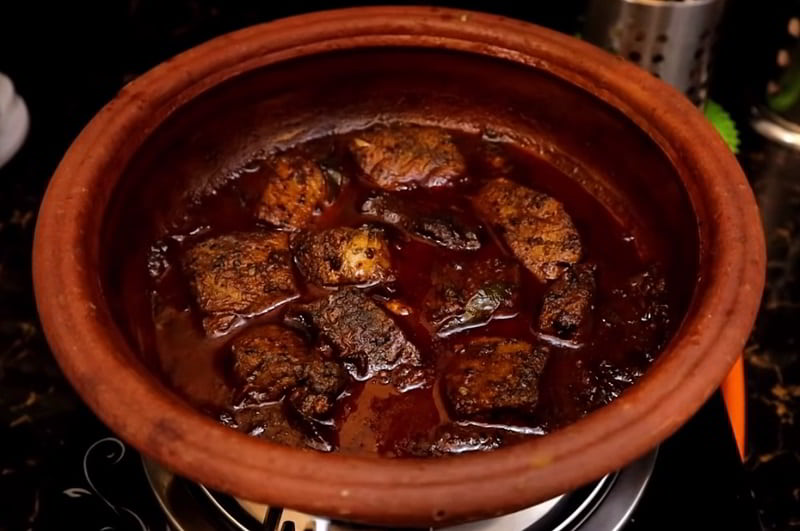
Malu Mirisata, a beloved Sri Lankan fish curry, tantalizes the taste buds with its robust chili flavor, making it a preferred culinary approach for preparing fish in Sri Lanka. Celebrated across the country, especially in coastal regions where seafood is a dietary staple, Malu Mirisata incorporates the vibrant essence of chilies into the cooking process. With variations that include the addition of coconut milk, this fish curry offers a delightful and spicy experience that complements well with rice, bread, or string hoppers. Rooted in Sri Lankan culinary traditions, this simple yet flavorful cooking method relies on minimal ingredients, showcasing the prowess of chili as a predominant seasoning. The convenience of Malu Mirisata is further highlighted by its commercial availability in packages like cans and flexible pouches, making this beloved dish accessible for enthusiasts to savor at their convenience.
Gova Kaldu
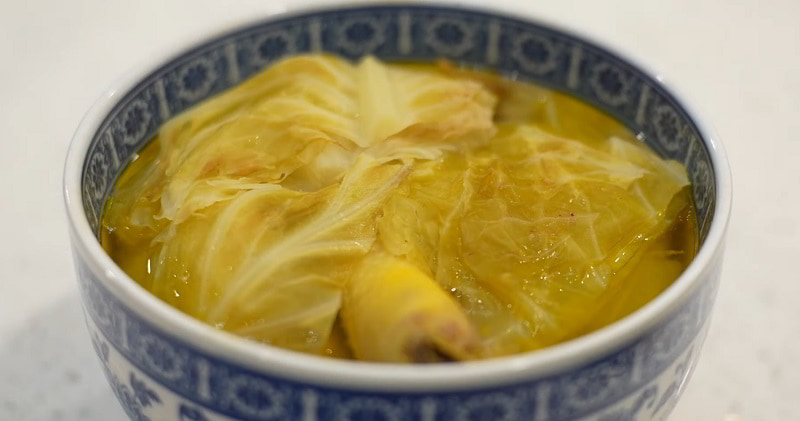
Gova Kaldu, a time-honored Sri Lankan delicacy, beckons with its aromatic blend of spiced cabbage and chicken broth, a culinary tradition often paired with Idiyappam (string hoppers). With roots that trace back to Portuguese influence, the dish's nomenclature, kaldu, echoes the Portuguese term caldo for broth, while gova pays homage to the Portuguese cabbage variety known as couve tronchuda. This flavorful offering, which enjoyed popularity among elite Sinhalese families in bygone eras until the early 20th century, exemplifies the fusion of culinary influences that have shaped Sri Lanka's gastronomic landscape. Gova Kaldu stands as a testament to the rich historical tapestry woven into the island's cuisine, providing a sensory journey through time and taste.
Vaalai Kai Sambol
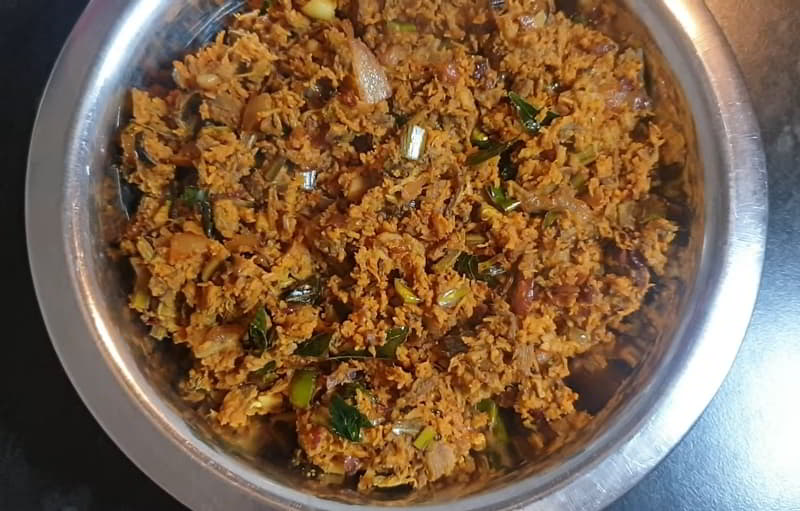
Vaalai Kai Sambol, a cherished Sri Lankan condiment, weaves together the vibrant flavors of unripe plantains, mustard seeds, and an array of spices, offering a delightful culinary experience. The preparation involves creating a smooth paste from mustard seeds, salt, dry-roasted red chilies, vinegar, and a hint of sugar. Meanwhile, green chilies and onions are finely chopped, and plantains, peeled and diced, undergo a golden transformation through deep-frying. The diced plantains, now resplendent in a light brown hue, are then harmoniously combined with the vibrant medley of onions, green chilies, and a luscious blend of thick coconut milk and the earlier-prepared spice paste.
This Vaalai Kai Sambol transcends its components, embodying the mastery of Sri Lankan culinary craftsmanship. The dish not only celebrates the flavors of the region but also exemplifies the artistry involved in transforming simple ingredients into a symphony of tastes and textures, making it a sought-after accompaniment that graces tables across the island.
Chutney
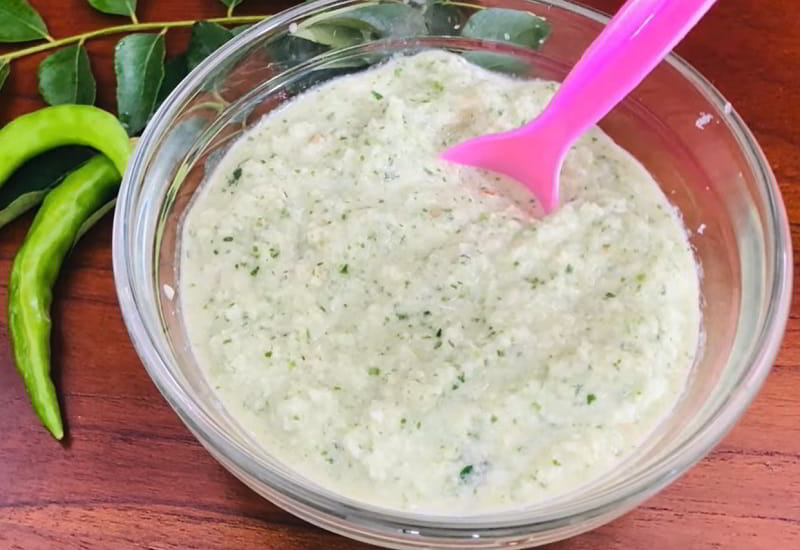
Chutney, a versatile spread synonymous with the cuisines of the Indian subcontinent, manifests in a myriad of delightful forms. Whether it's the zesty notes of a tomato relish, the nutty richness of ground peanut garnish, the cooling essence of yogurt or curd, or the spicy allure of coconut, onion, or mint dipping sauces, chutneys add a burst of flavor to diverse dishes.
Anglo-Indian cuisine introduces a unique twist, incorporating tart fruits like sharp apples, rhubarb, or damson pickle, expertly balanced with an equal weight of sugar. To enhance shelf life and preserve the essence of autumn fruits throughout the year, vinegar becomes a crucial ingredient. The English-style chutney, reminiscent of jams, jellies, and pickles, caters to both domestic use and commercial production.
In the realm of Indian pickles, mustard oil takes the lead as a pickling agent, while Anglo-Indian chutneys opt for malt or cider vinegar, resulting in a milder yet equally delightful product. Beyond the Indian subcontinent, Western cuisine adopts chutney as a companion to hard cheese or a complement to cold meats and fowl, gracing cold pub lunches with a burst of flavors.
Puri
-1707803895.jpg)
Puri, also known as poori, emerges as a deep-fried delight, crafted from unleavened whole-wheat flour, with roots deeply embedded in the culinary tapestry of the Indian subcontinent. This golden, puffed bread stands out as a quintessential part of breakfast and snack time, captivating taste buds with its irresistible crispiness and comforting aroma.
Beyond its role in everyday meals, puris take center stage during special and ceremonial functions, playing a significant role in Hindu rituals. These golden orbs grace ceremonial tables as a vital component of prasadam, the divine offering presented during prayers. This underscores the cultural and spiritual significance of puris, aligning them with moments of festivity, devotion, and communal gatherings.
Whether relished as a quick snack or savored during sacred occasions, the puri symbolizes not just culinary craftsmanship but also cultural and spiritual connections. Its versatility and widespread popularity make it a beloved presence in households across the Indian subcontinent, blending tradition with the joyous moments that punctuate daily life.
Gulab Jamun
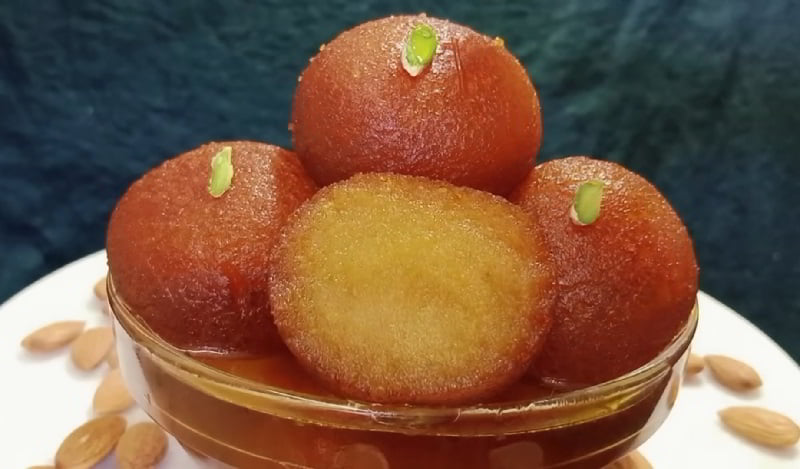
Gulab Jamun, a delectable sweet confection, traces its origins to the vibrant tapestry of the Indian subcontinent. This luscious dessert is meticulously crafted, predominantly from milk solids. Traditionally, khoya, a velvety substance achieved by reducing milk to the consistency of a soft dough, forms the heart of this culinary masterpiece. However, contemporary adaptations embrace convenience, incorporating dried or powdered milk into the recipe.
The preparation involves shaping the milk-derived mixture into spherical delights, which are then deep-fried to golden perfection. Following their fried transformation, these sumptuous balls are immersed in a fragrant sugar syrup, allowing them to absorb sweetness and infuse their interior with a syrupy richness.
To elevate the sensory experience, Gulab Jamun is often adorned with a generous sprinkle of dried nuts like almonds and cashews. This not only adds a delightful crunch but also intensifies the overall flavor profile. With its roots deeply embedded in the culinary heritage of the subcontinent, Gulab Jamun stands as a timeless symbol of sweetness, joy, and celebration, enchanting palates and hearts alike across diverse cultural settings.
Dal Bhat
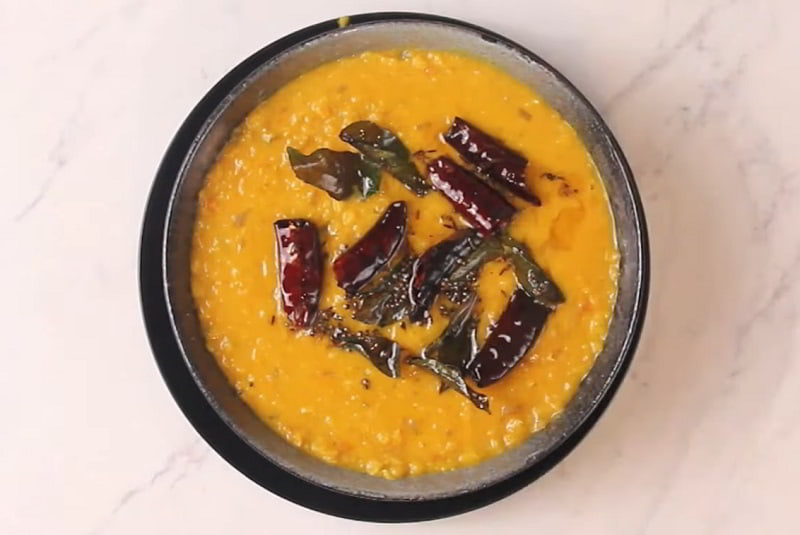
Dal Bhat, a culinary cornerstone hailing from the Indian subcontinent, paints a hearty picture with its essential components of steamed rice and a flavorful lentil or pulses stew known as dal. This traditional meal stands as a culinary linchpin, woven into the fabric of daily sustenance in the regions it calls home.
The term "Bhat" itself, synonymous with boiled rice across multiple Indo-Aryan languages, underscores the centrality of this grain to the dish. In Nepal, where elevated terrains challenge rice cultivation, alternative grains like barley, maize, buckwheat, or millet may be woven into a preparation known as dhindo or atho.
Diversity blossoms in the accompaniments, with roti joining the ensemble in Nepal, presenting rounds of unleavened bread to complement the meal. The dal, a canvas of lentils or beans, transforms with the infusion of ginger, onion, chili, tomatoes, garlic, or tamarind, creating a medley of flavors enriched by herbs and spices. The nuanced variations in recipes, shaped by season, locality, ethnic identity, and familial touch, elevate Dal Bhat beyond mere sustenance, marking it as a cherished and adaptive culinary tradition.
Rasam
-1707982635.jpg)
Rasam, a piquant South Indian soup-like delicacy, emerges as a flavorful companion to rice in the culinary tapestry of the region. Seamlessly integrated into a traditional South Indian meal, it often shares the spotlight with sambar rice, contributing its unique essence to the dining experience. Distinguished by its distinct taste, rasam sets itself apart from sambar through a bespoke blend of seasoning ingredients, resulting in a fluid and aromatic consistency.
The adaptability of rasam transcends traditional kitchens, finding its way into commercial markets in chilled prepared versions and convenient rasam paste bottled for easy use. A notable Anglo-Indian counterpart to rasam is the soup-like delight known as mulligatawny, with its nomenclature tracing its roots to the Tamil word "mulagu thani." This culinary gem not only graces the South Indian culinary landscape but also leaves an indelible mark on Sri Lankan cuisine, enriching the palates of those who savor its warm and tangy embrace.



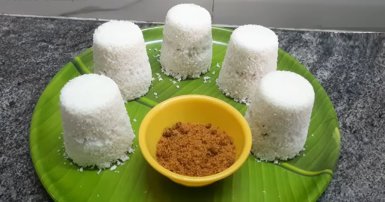


-1709813013.jpg)


